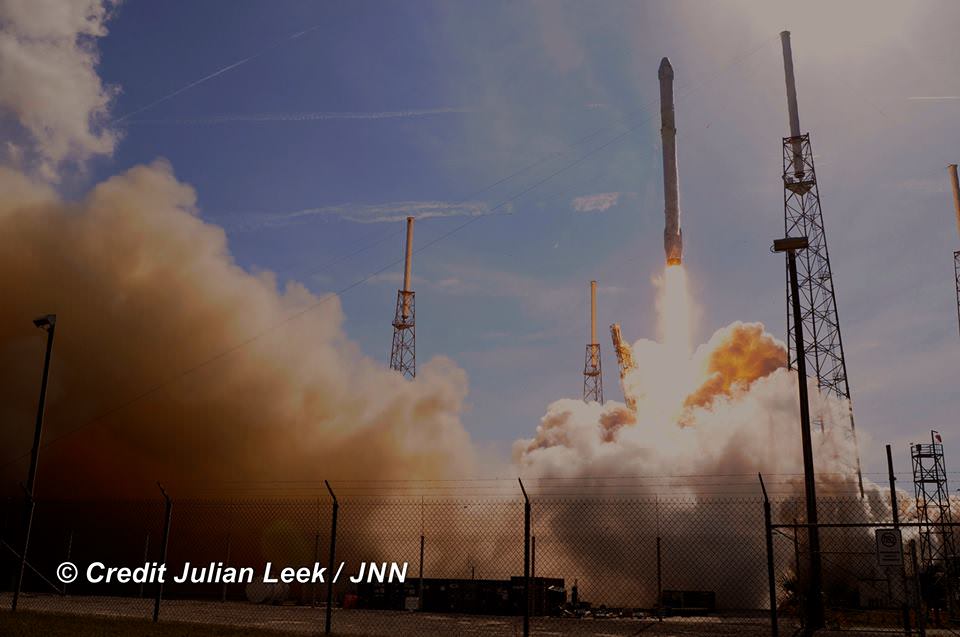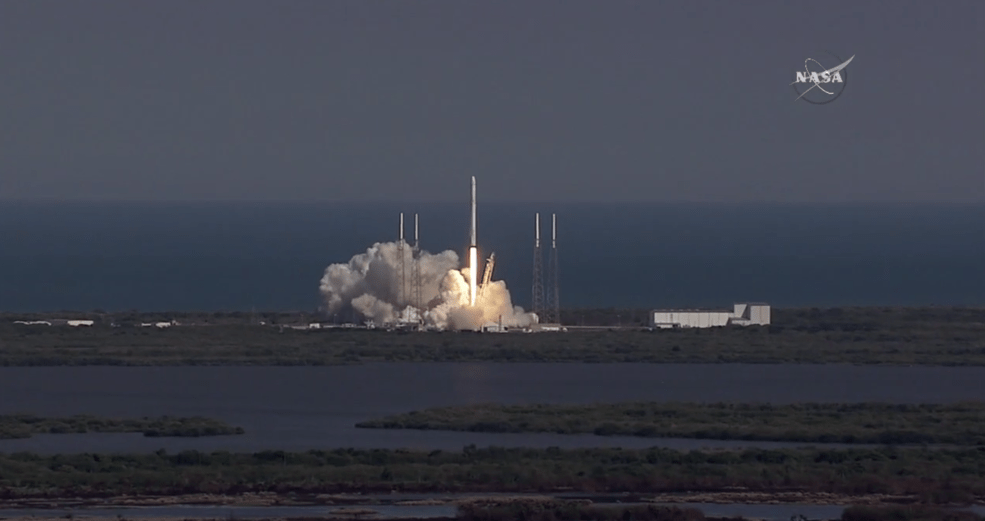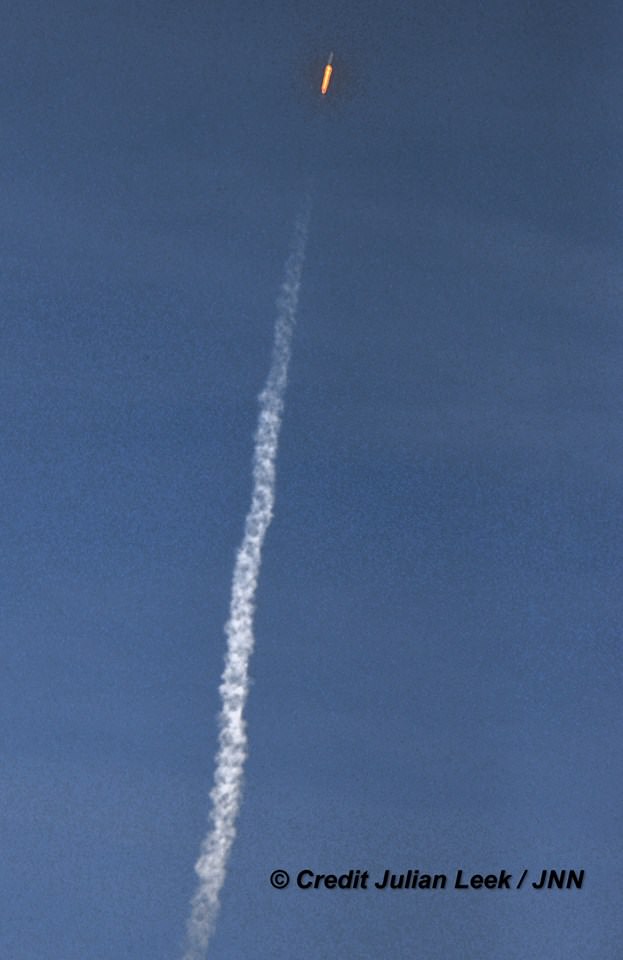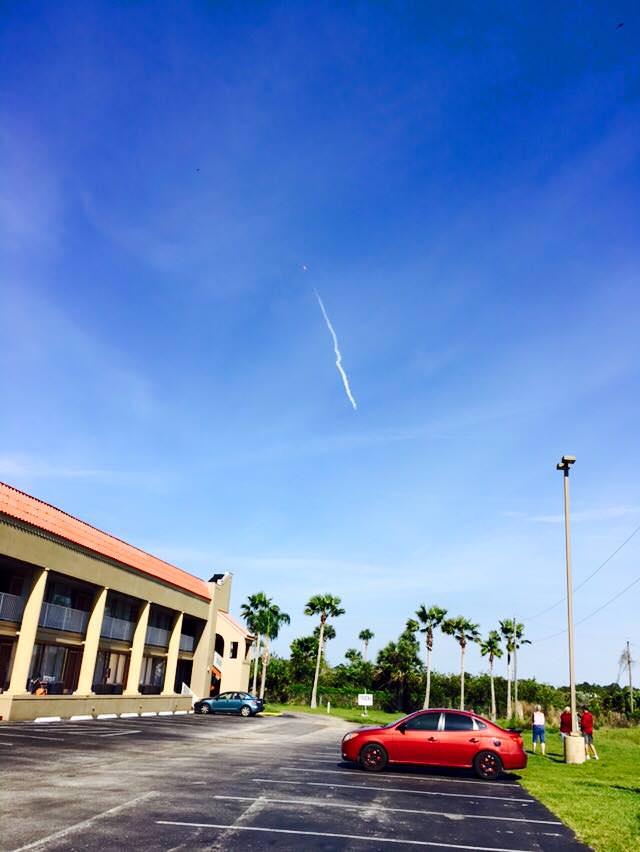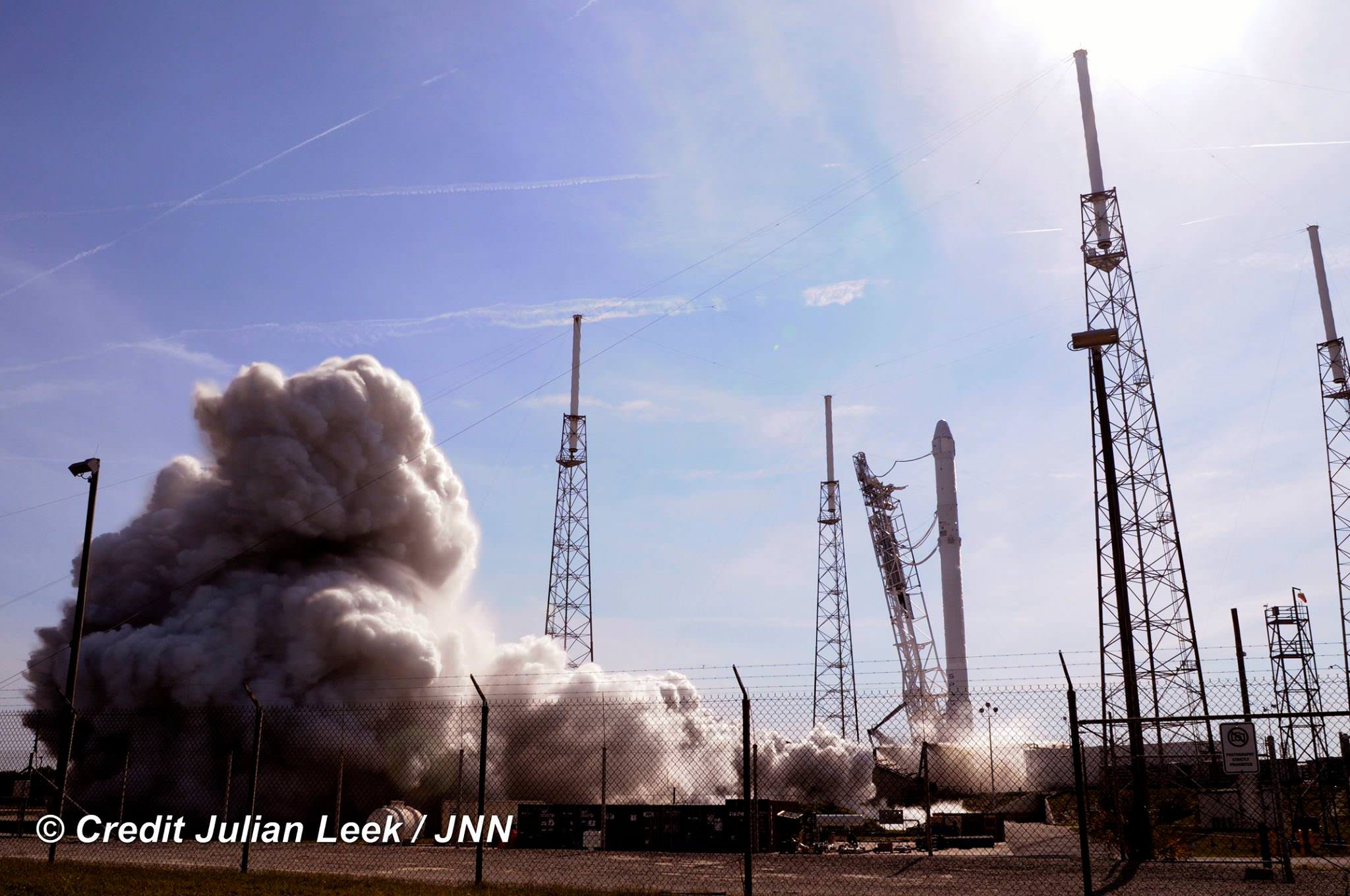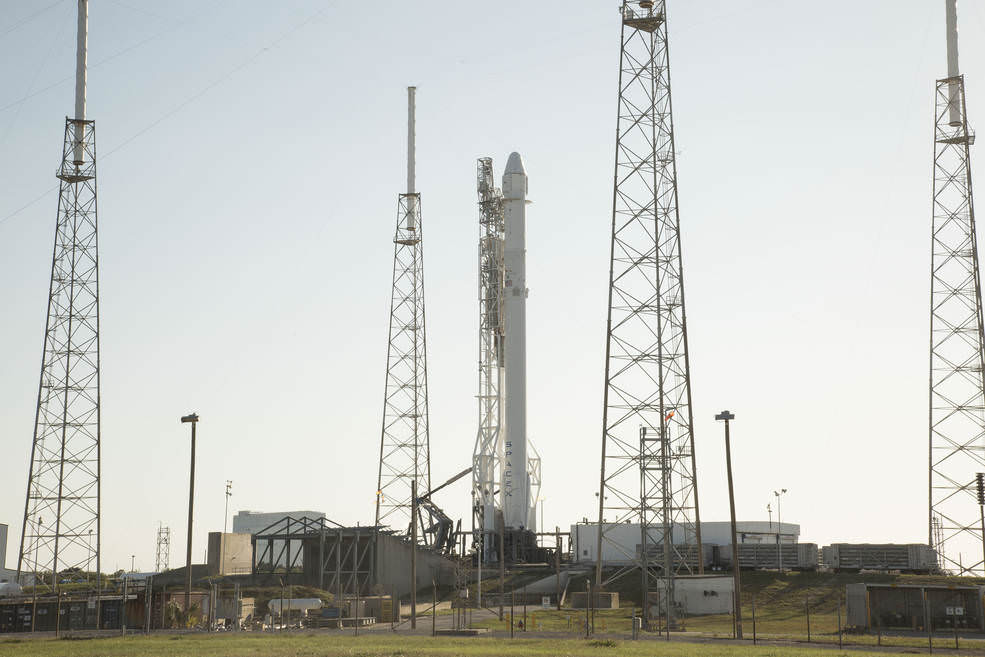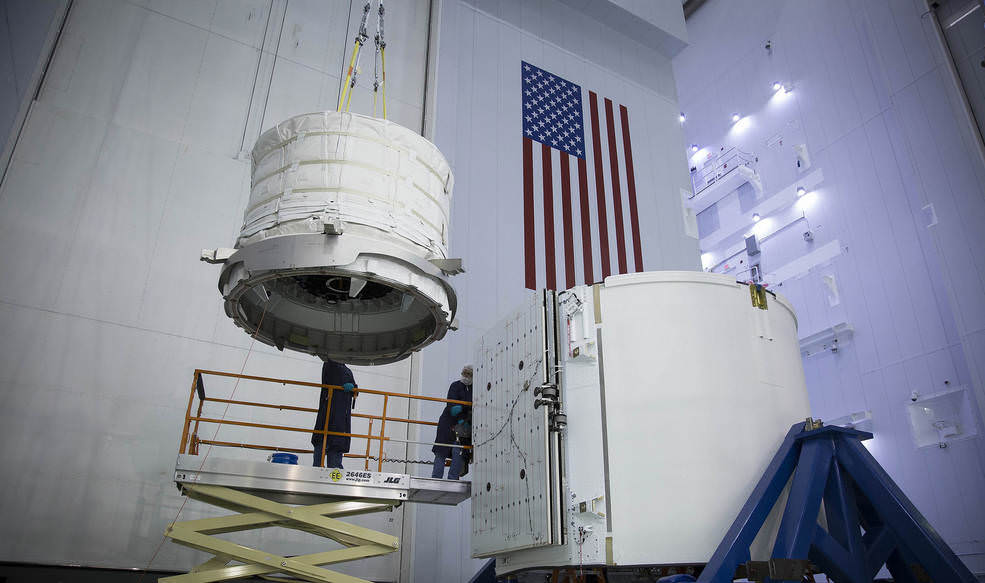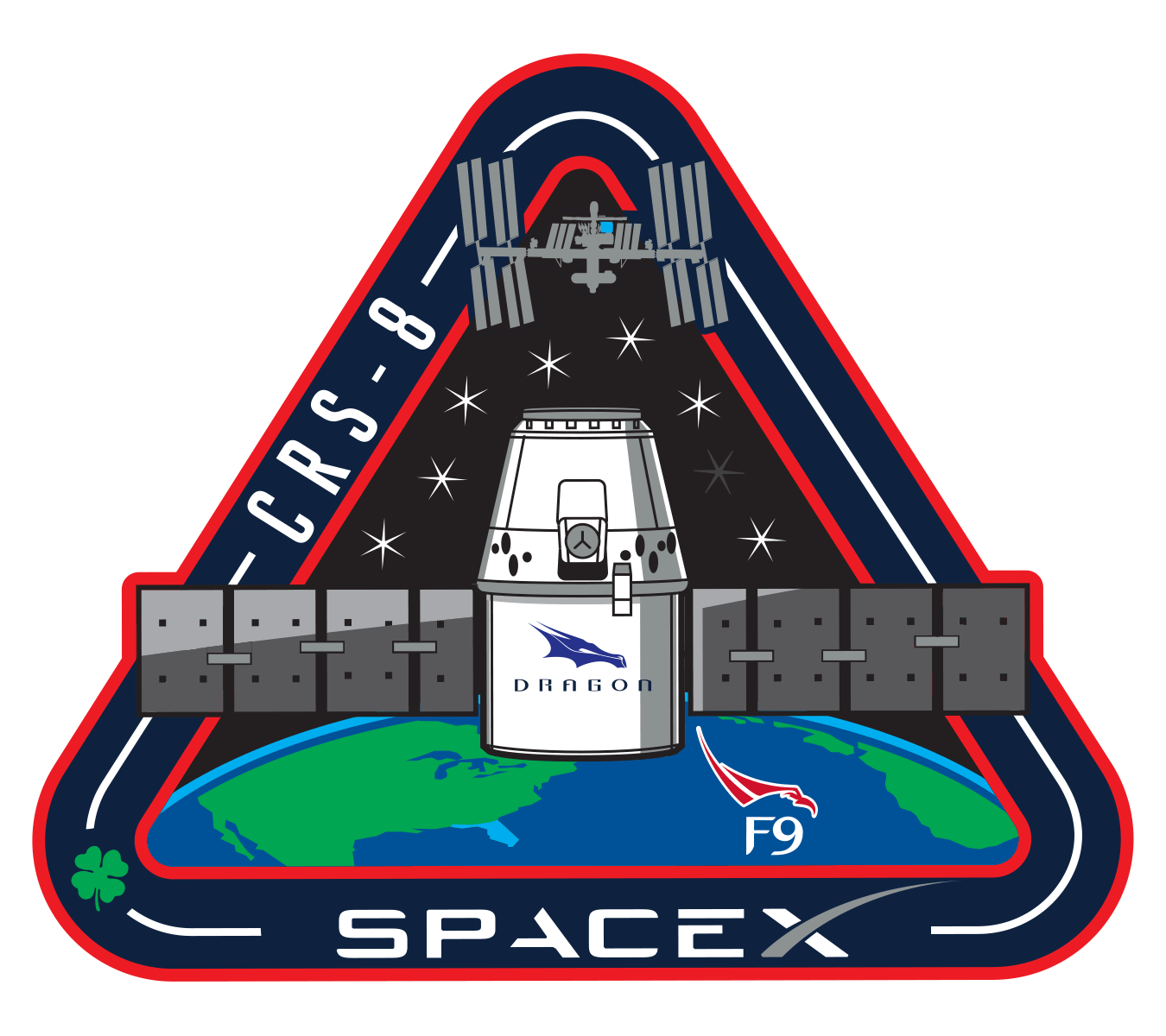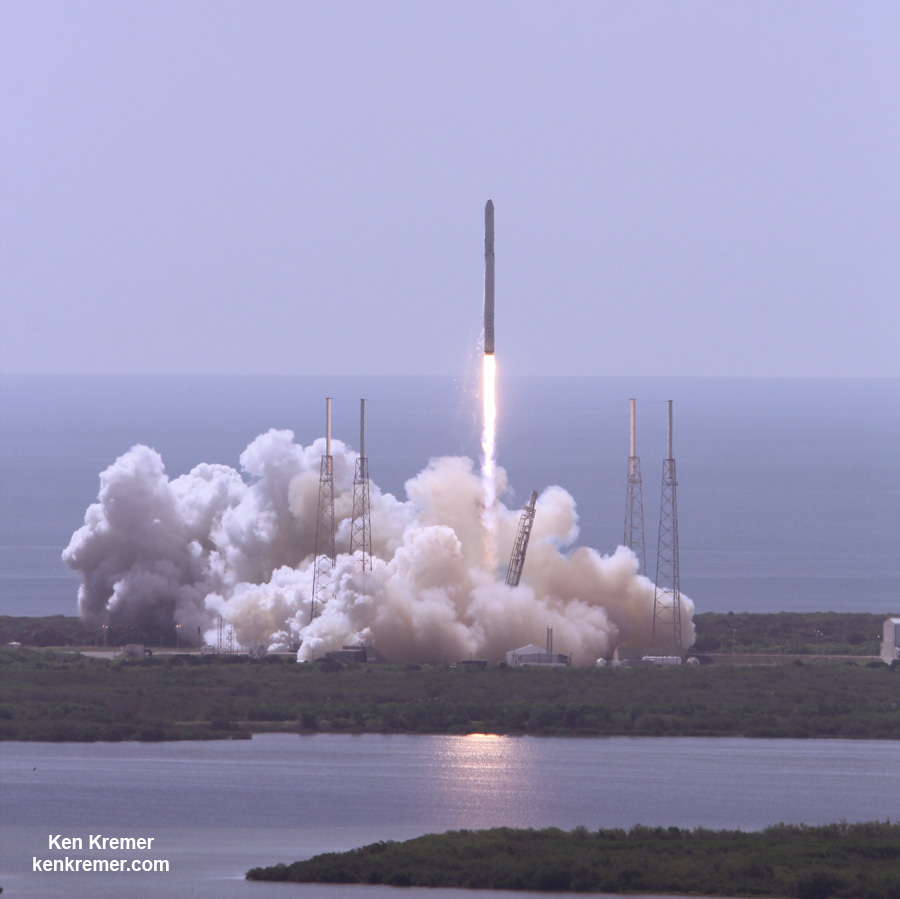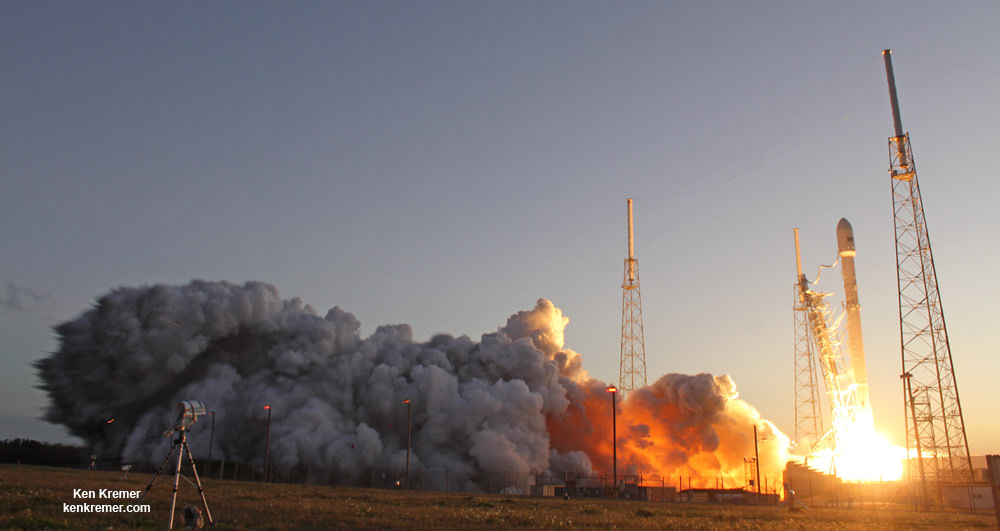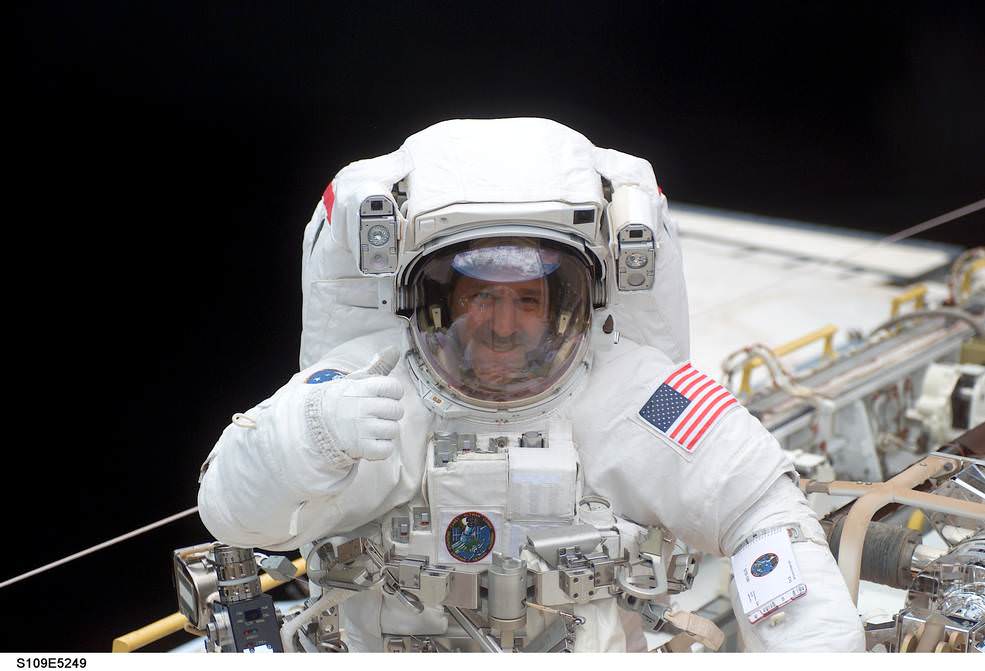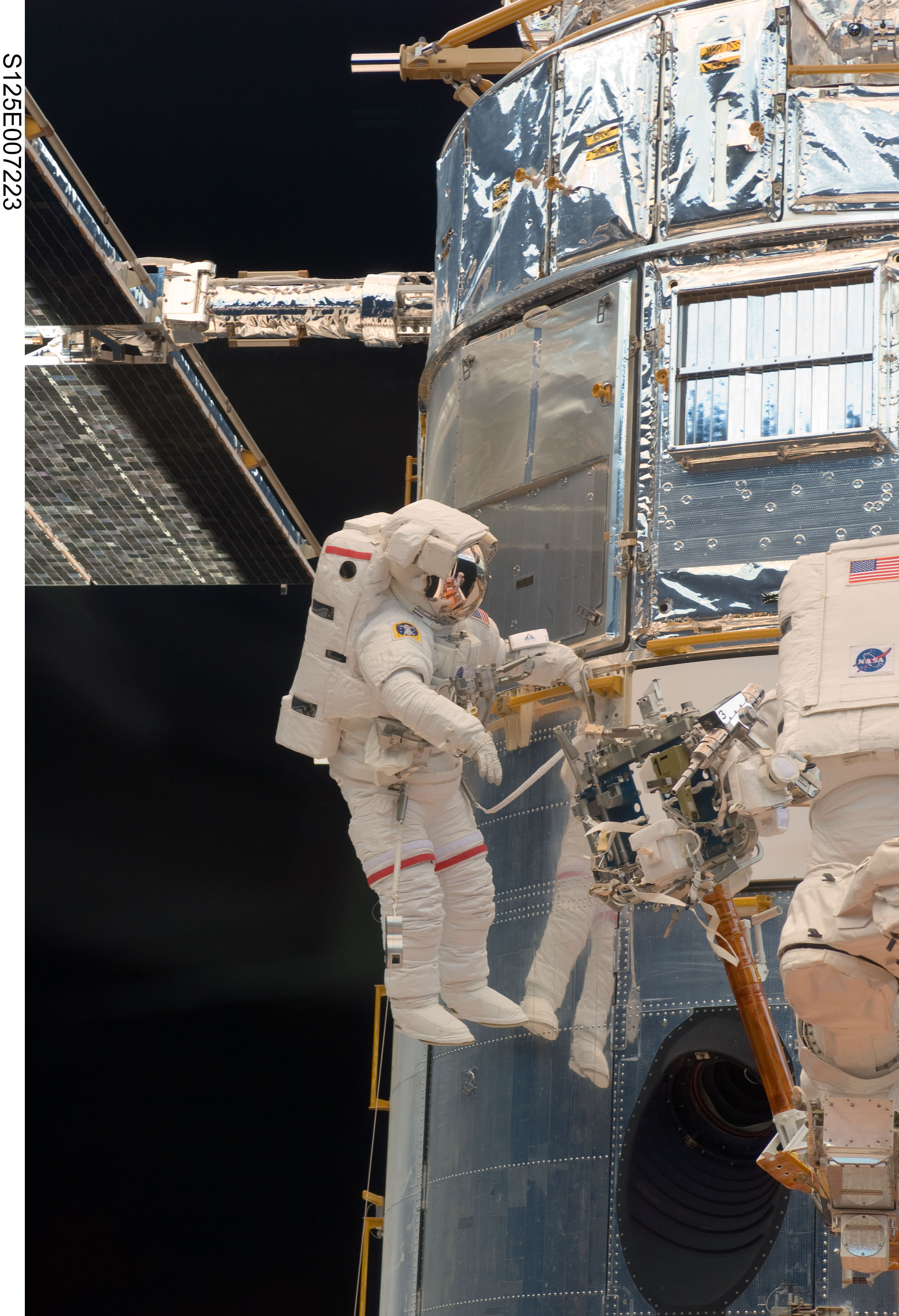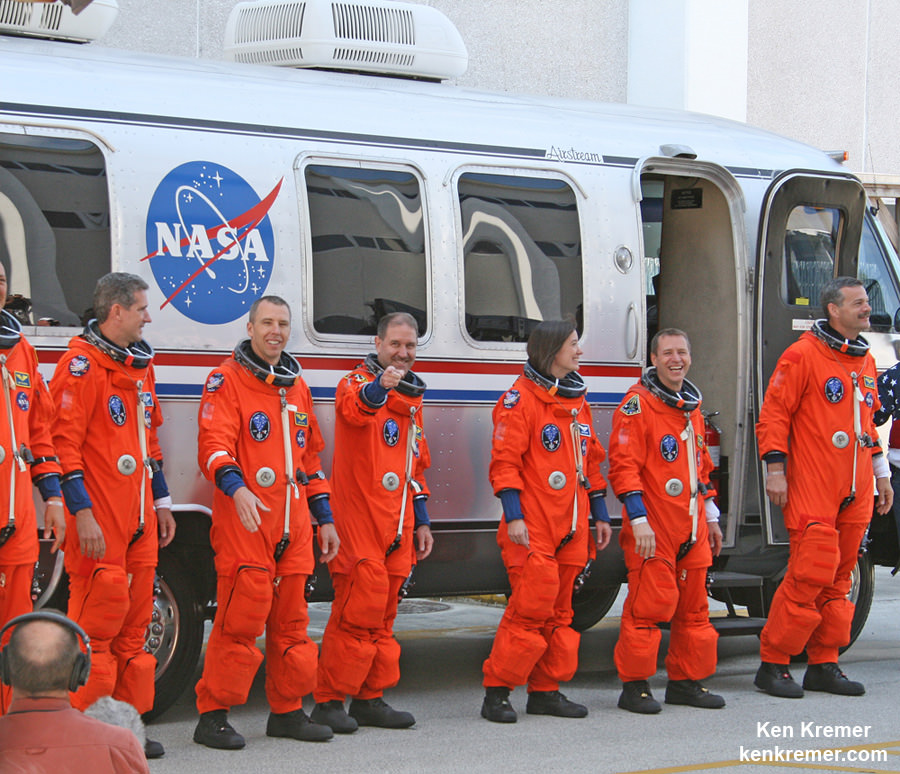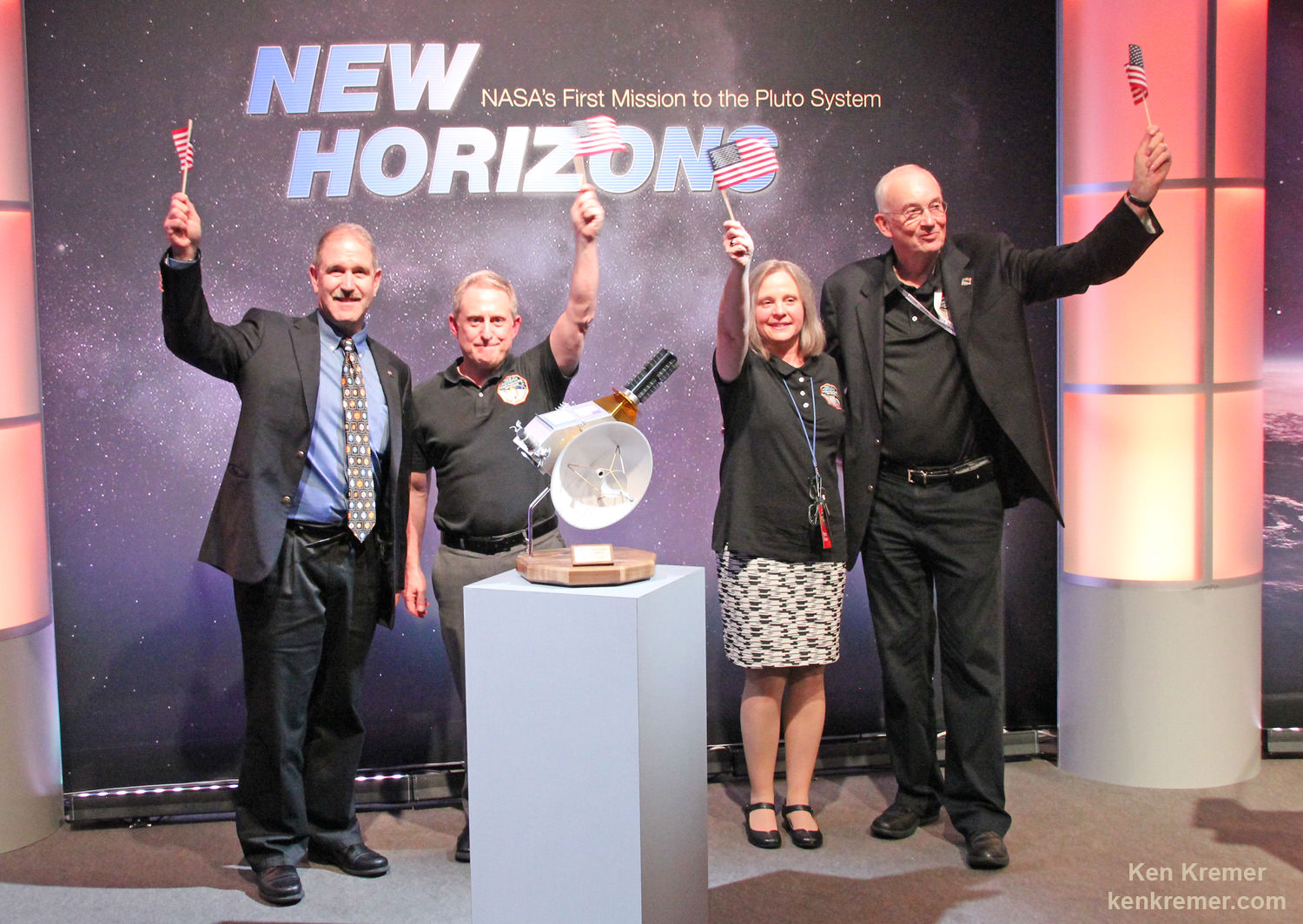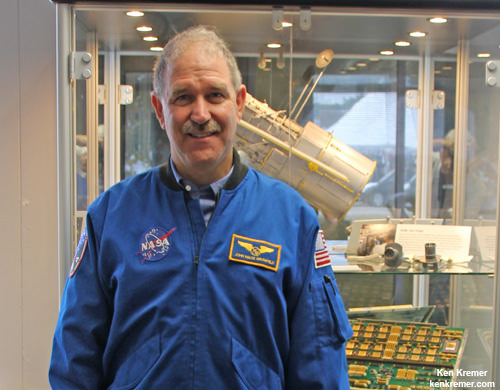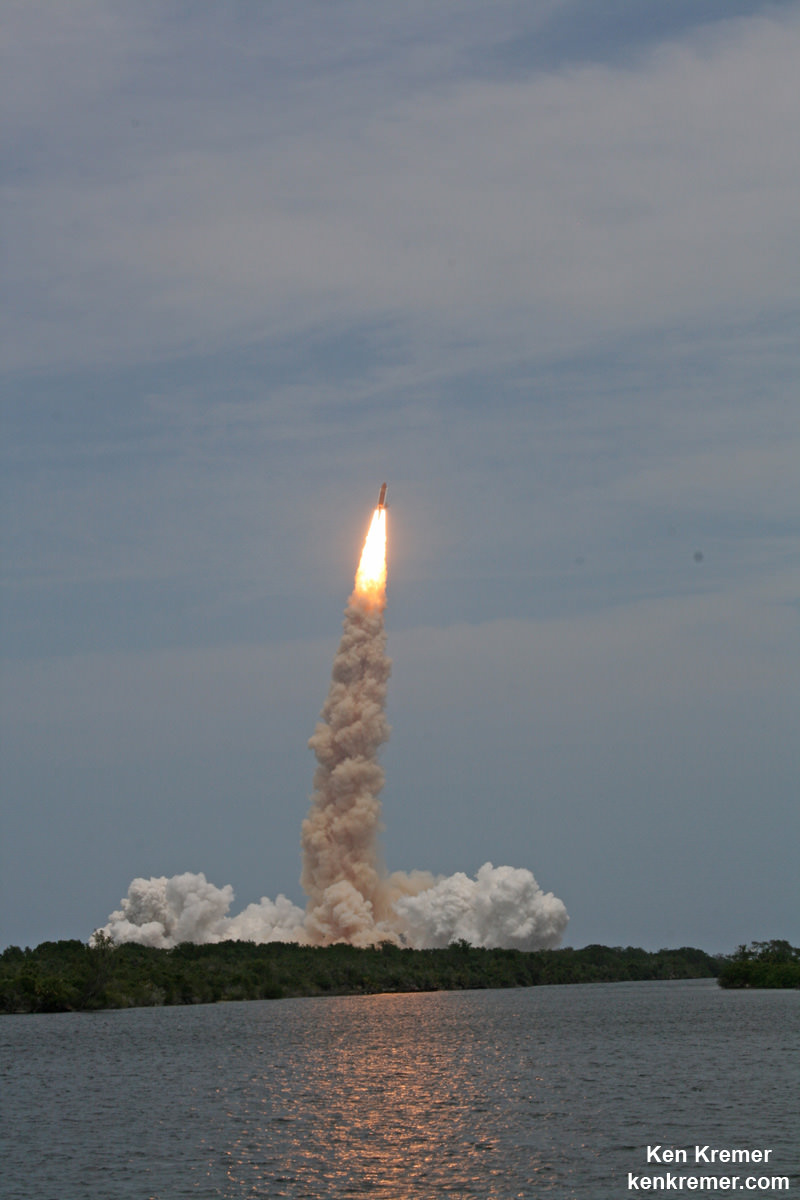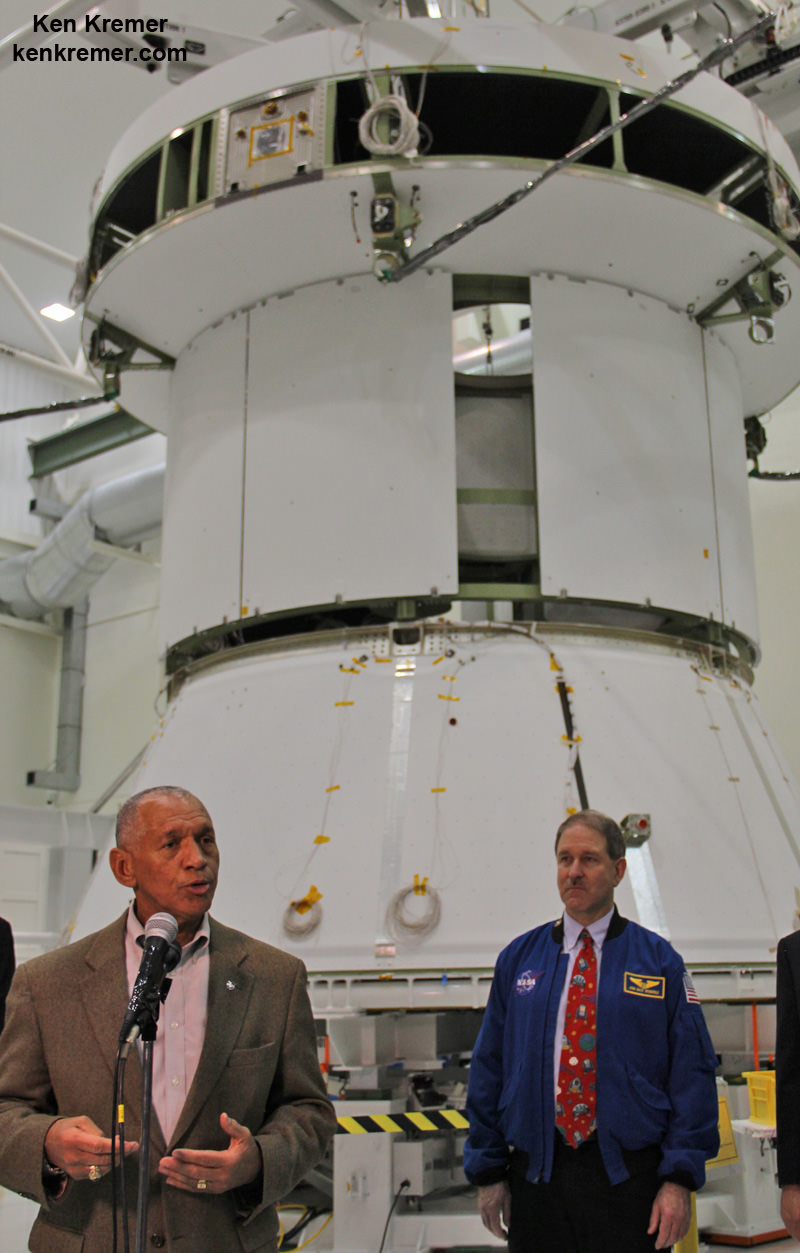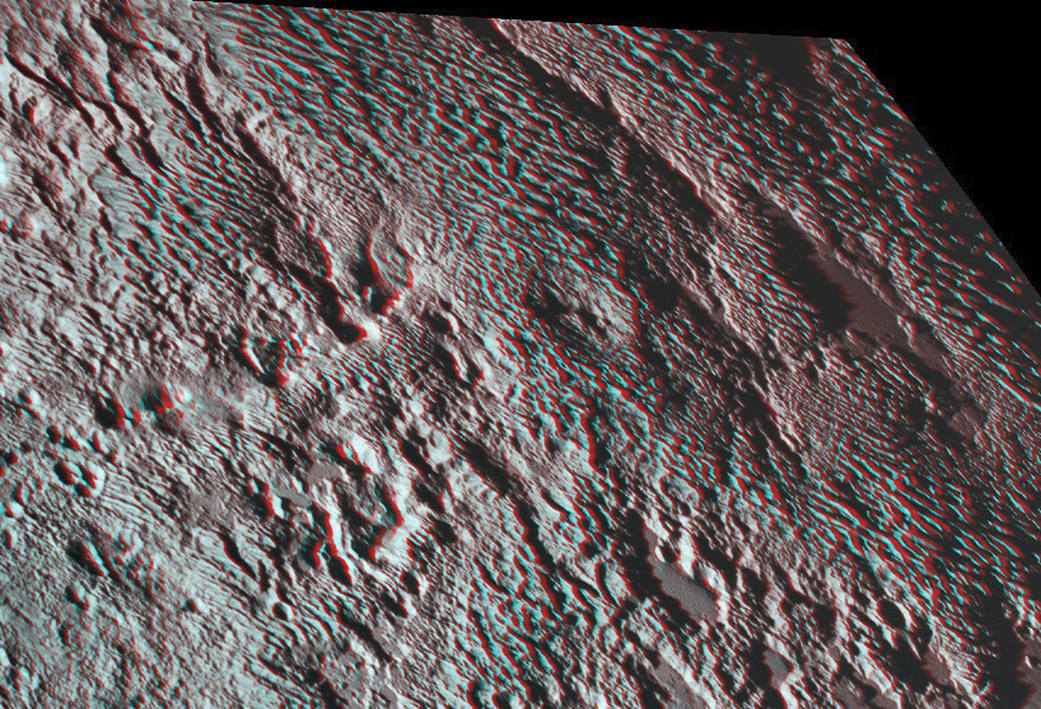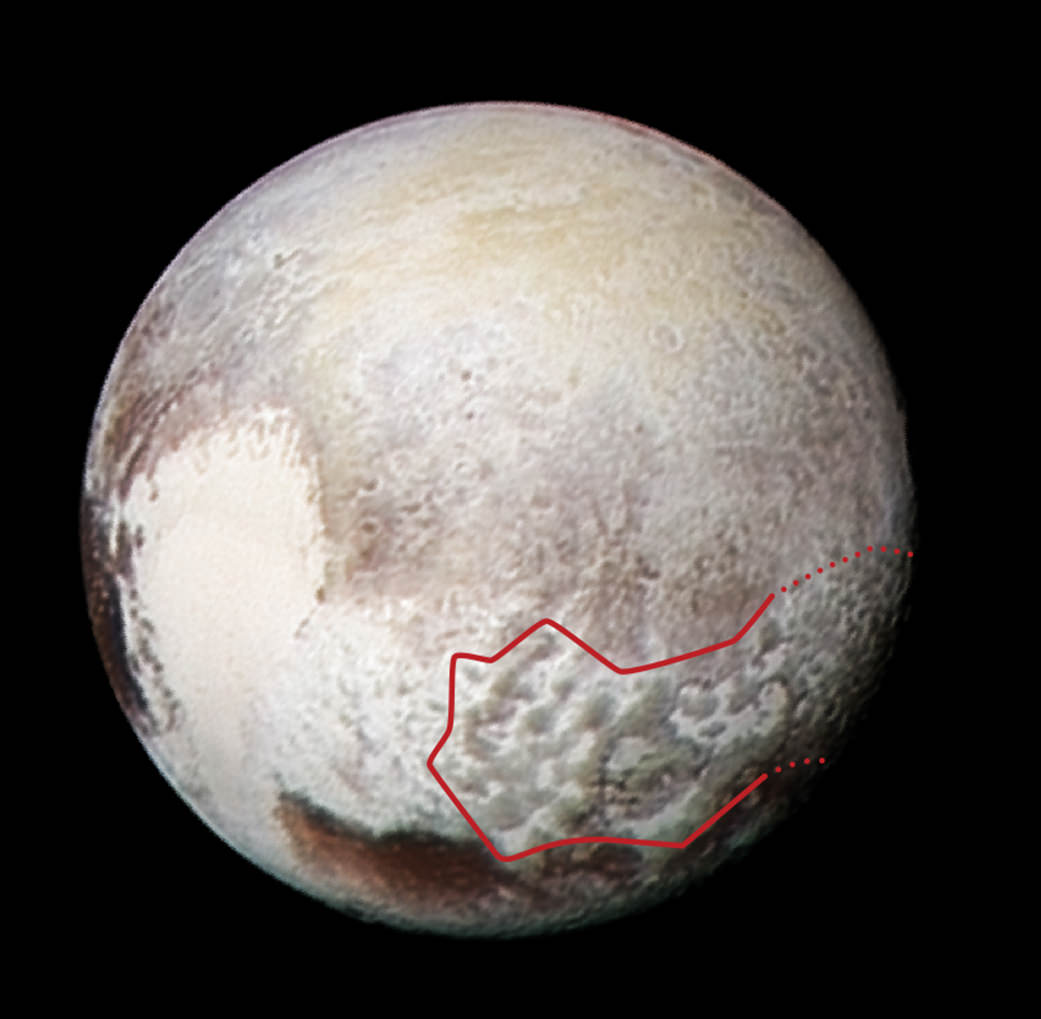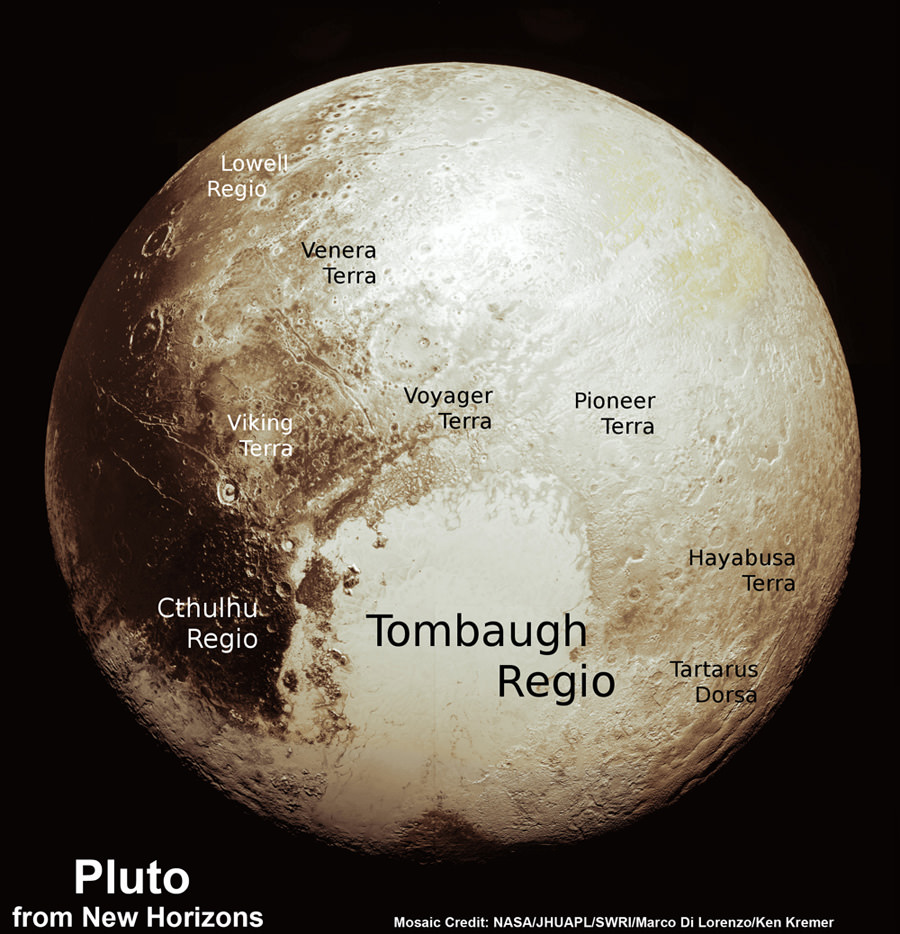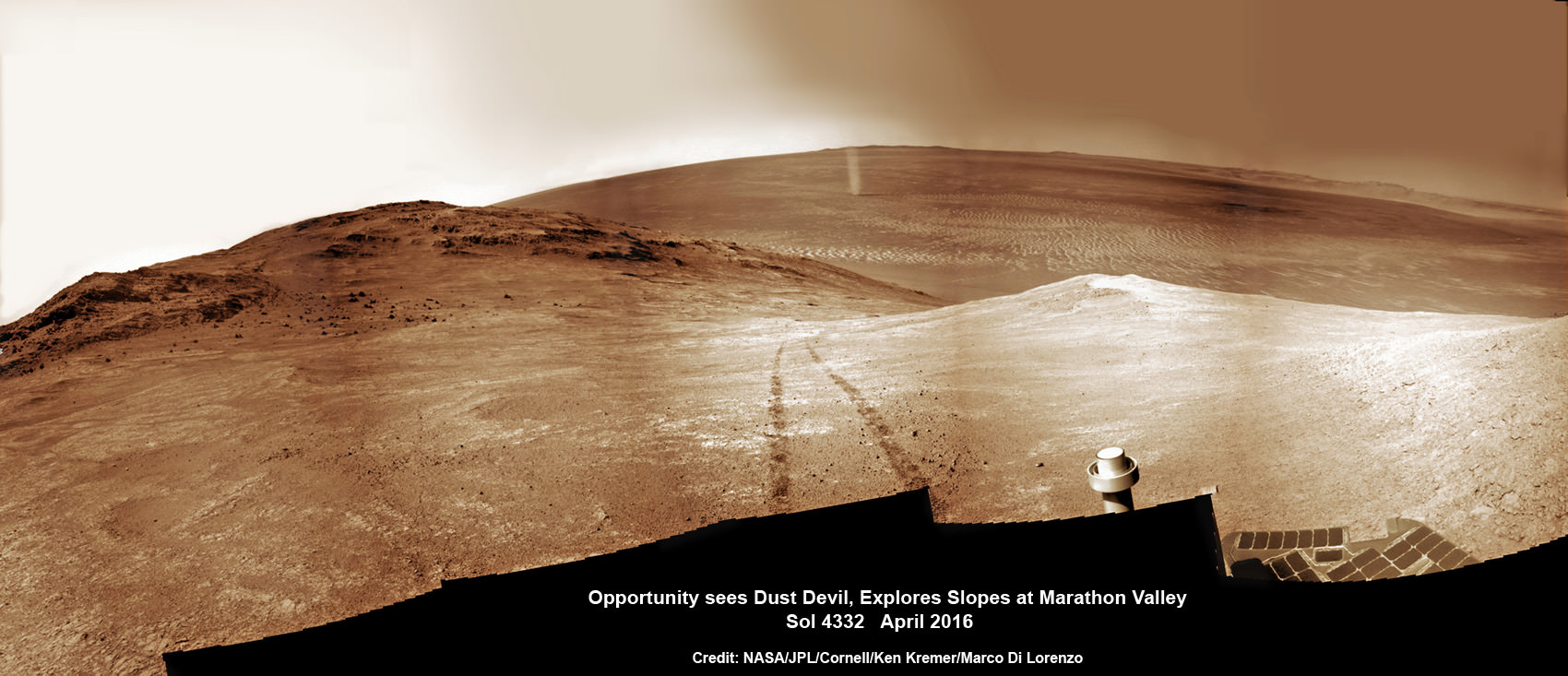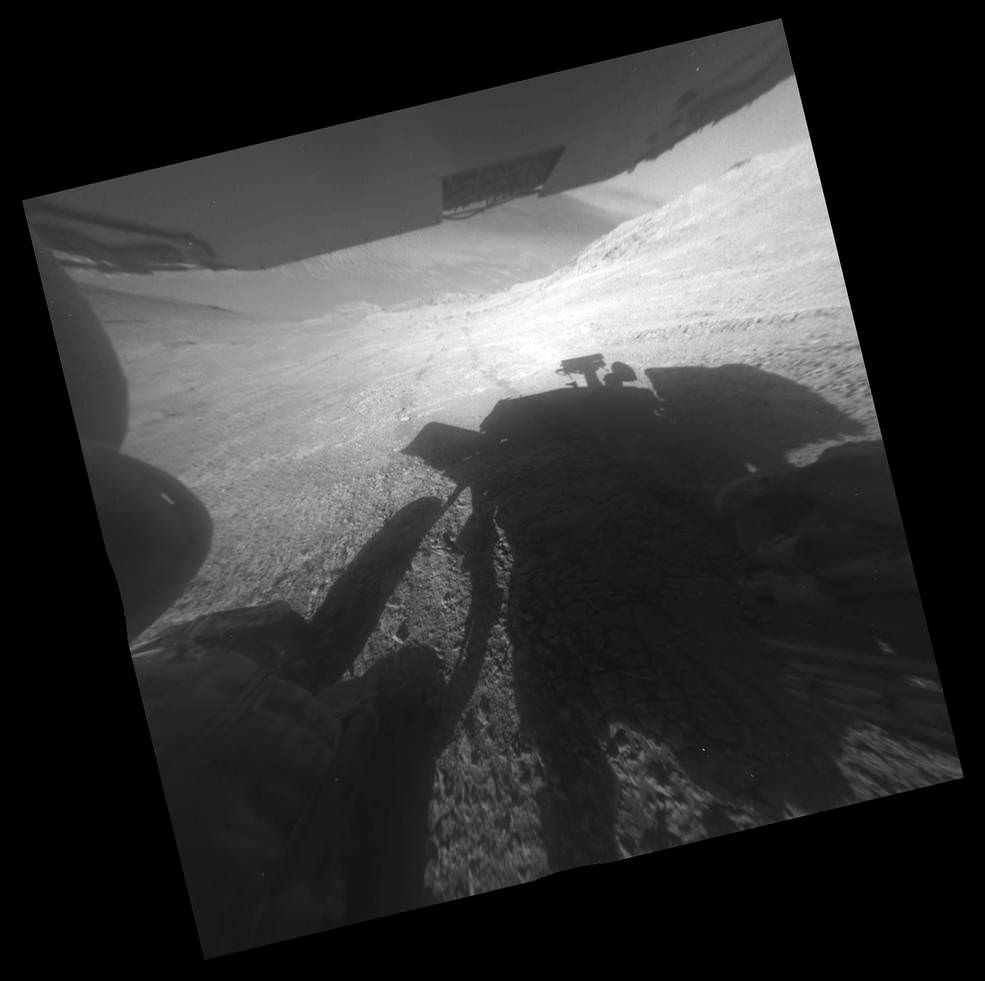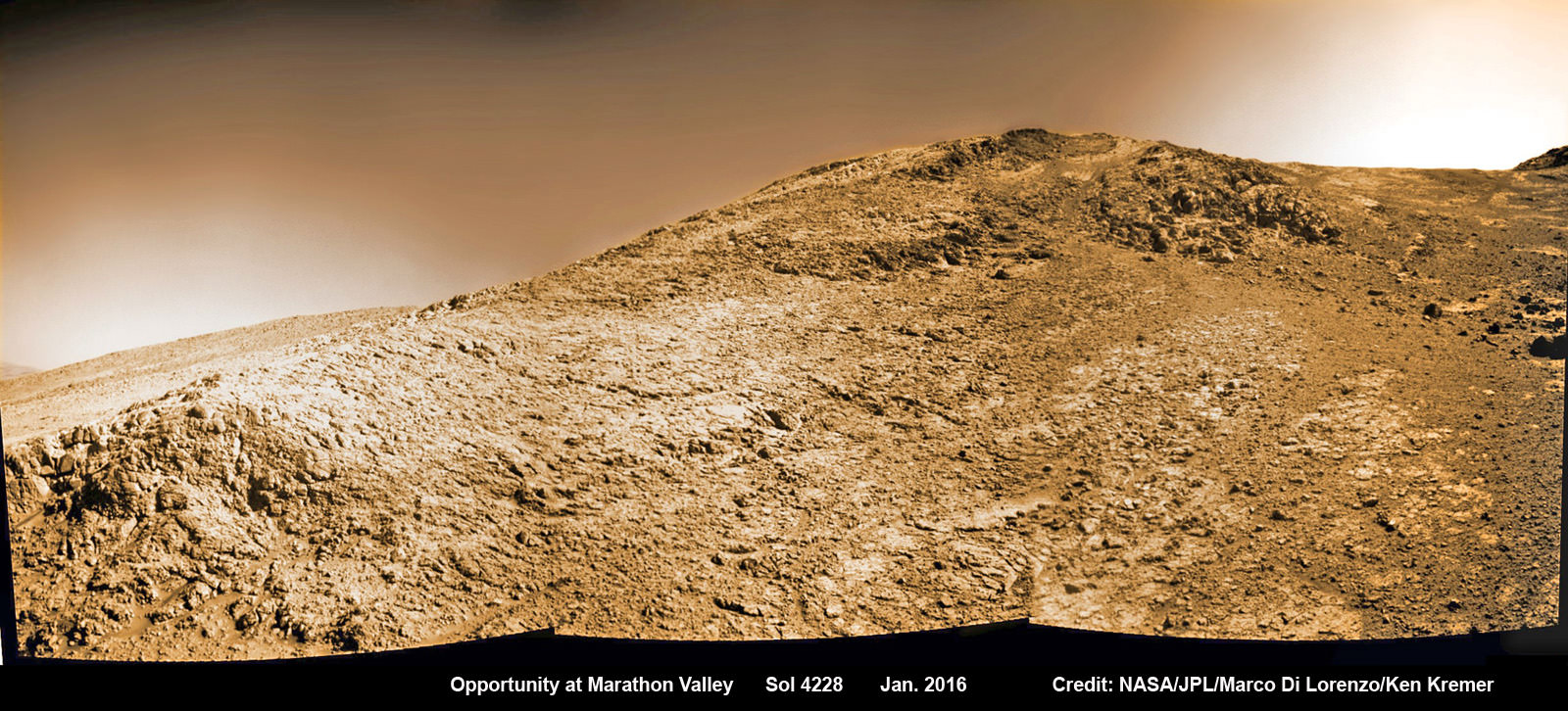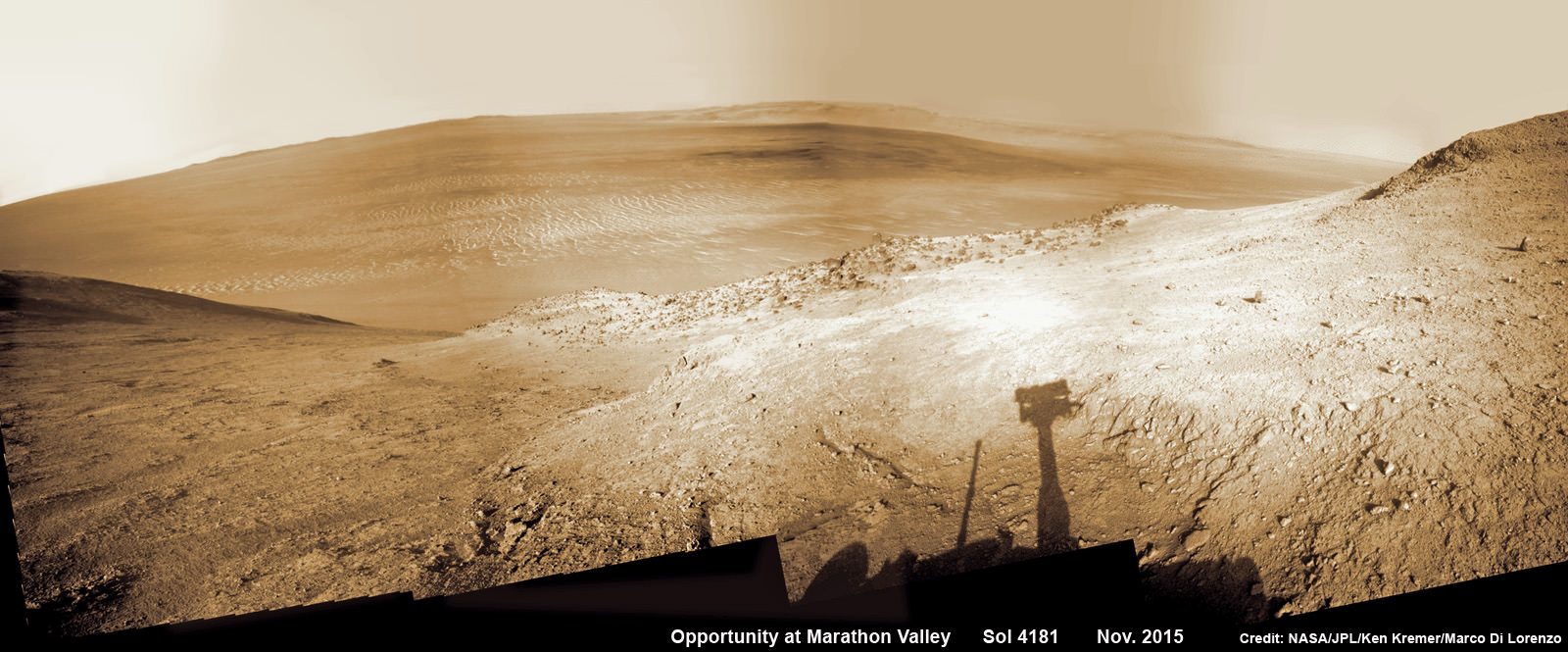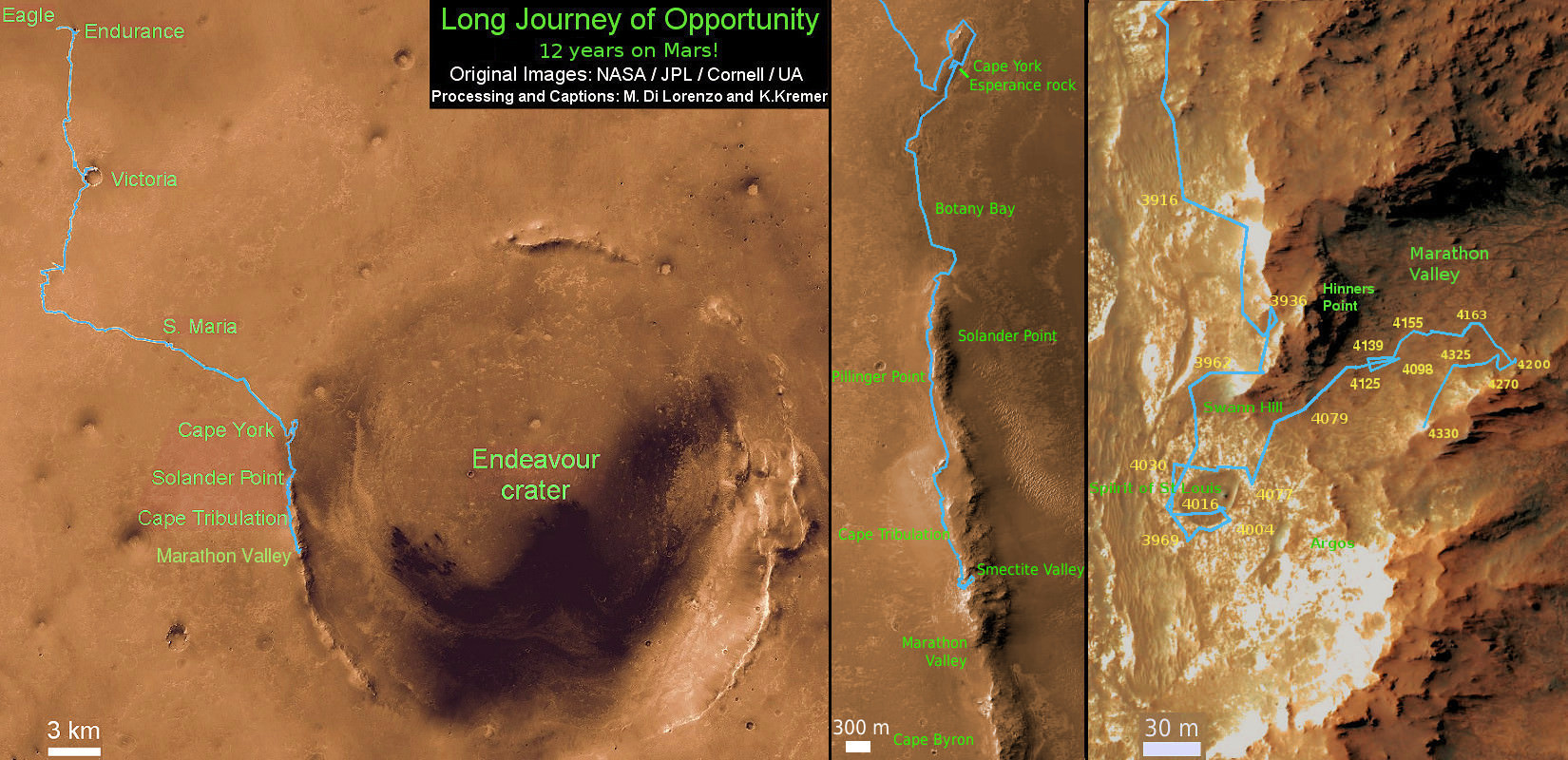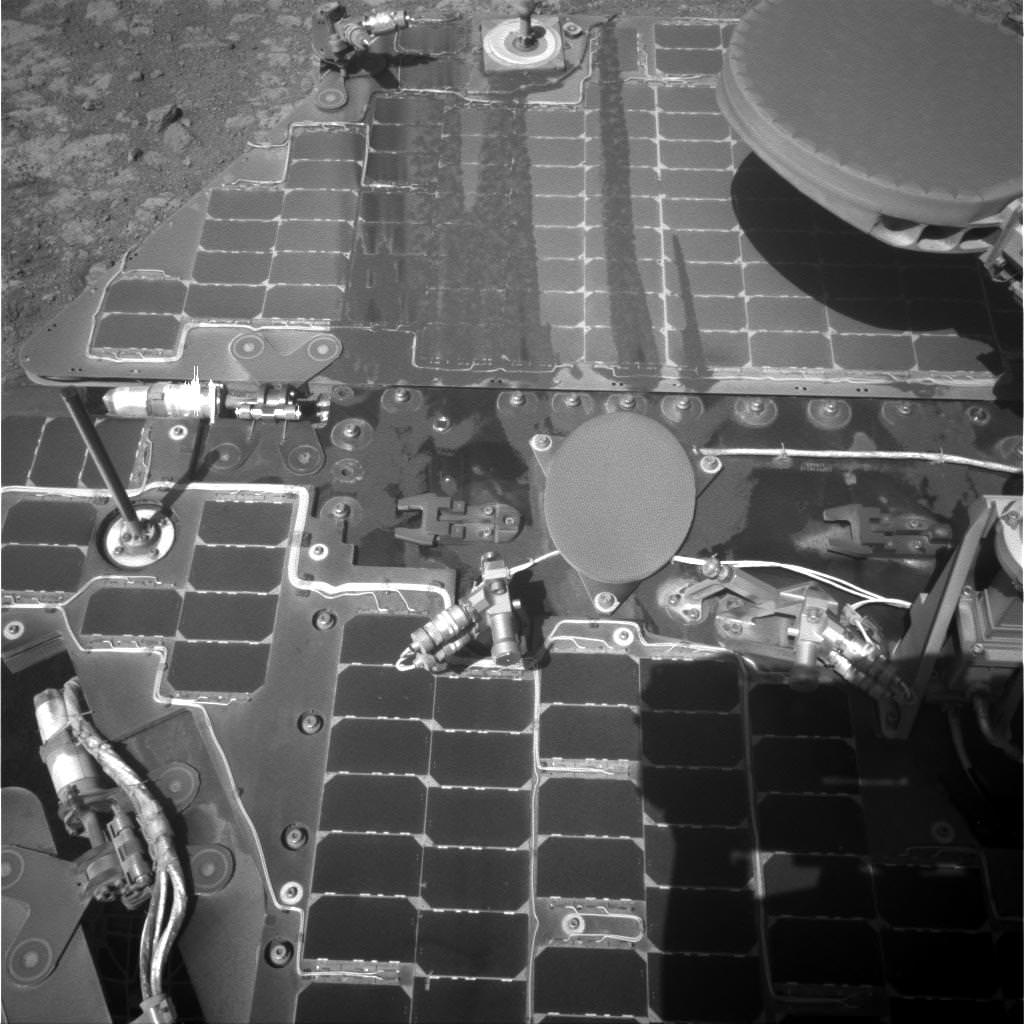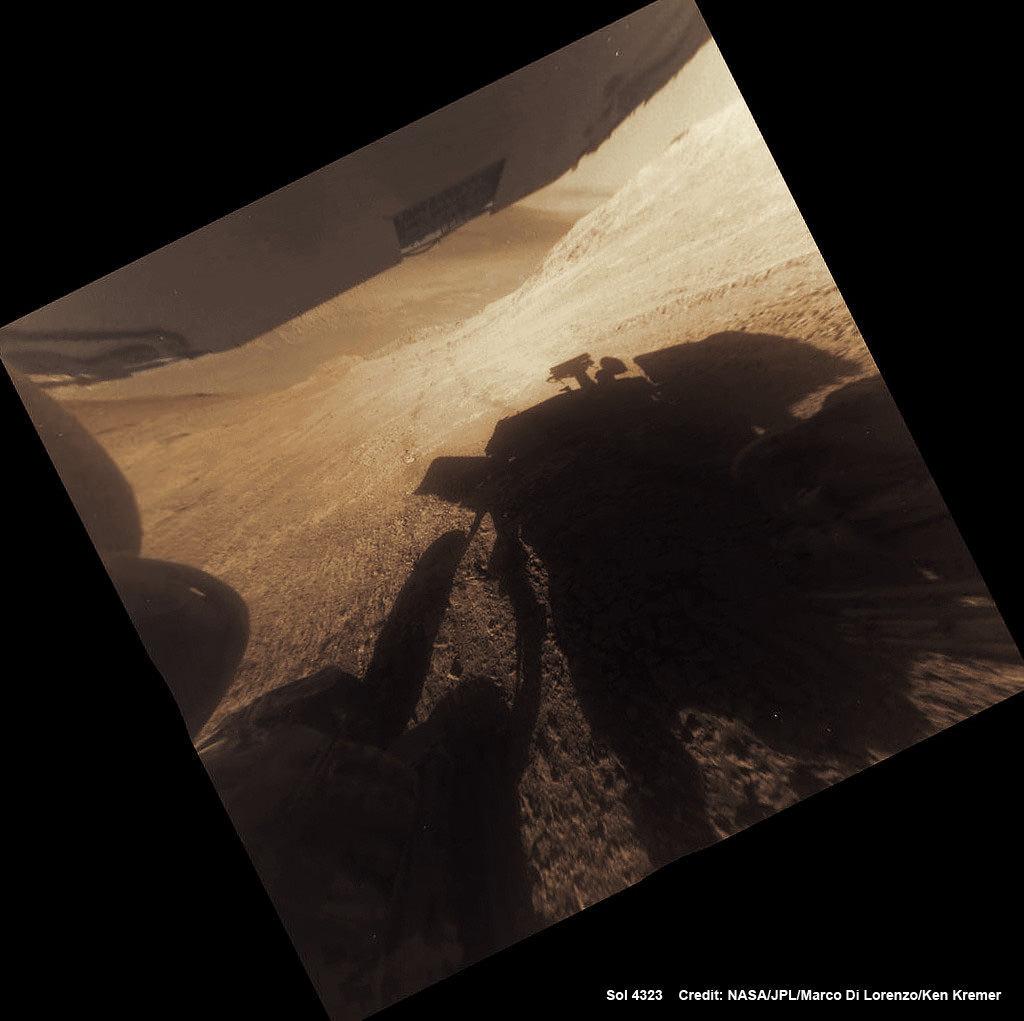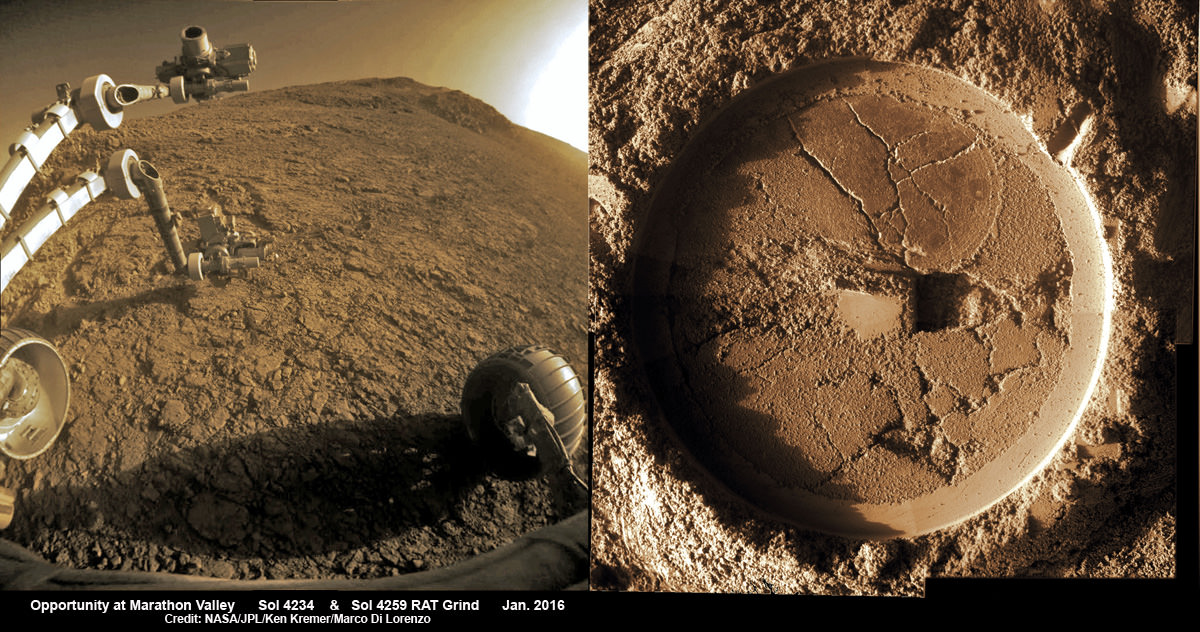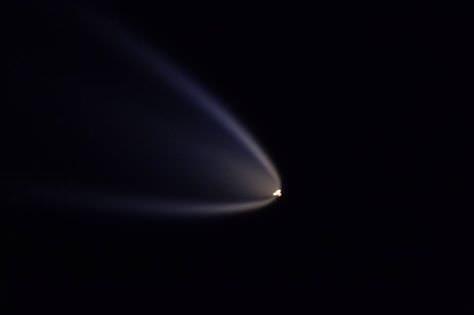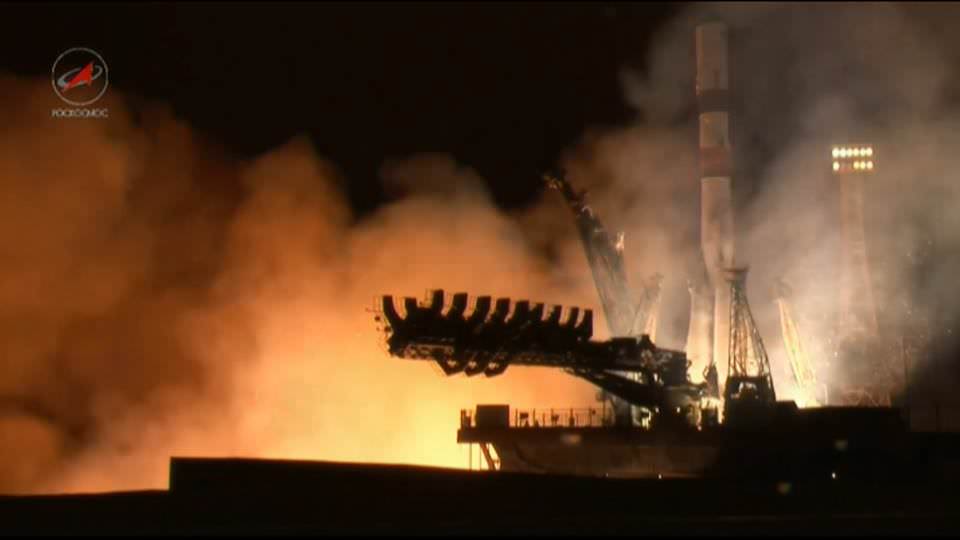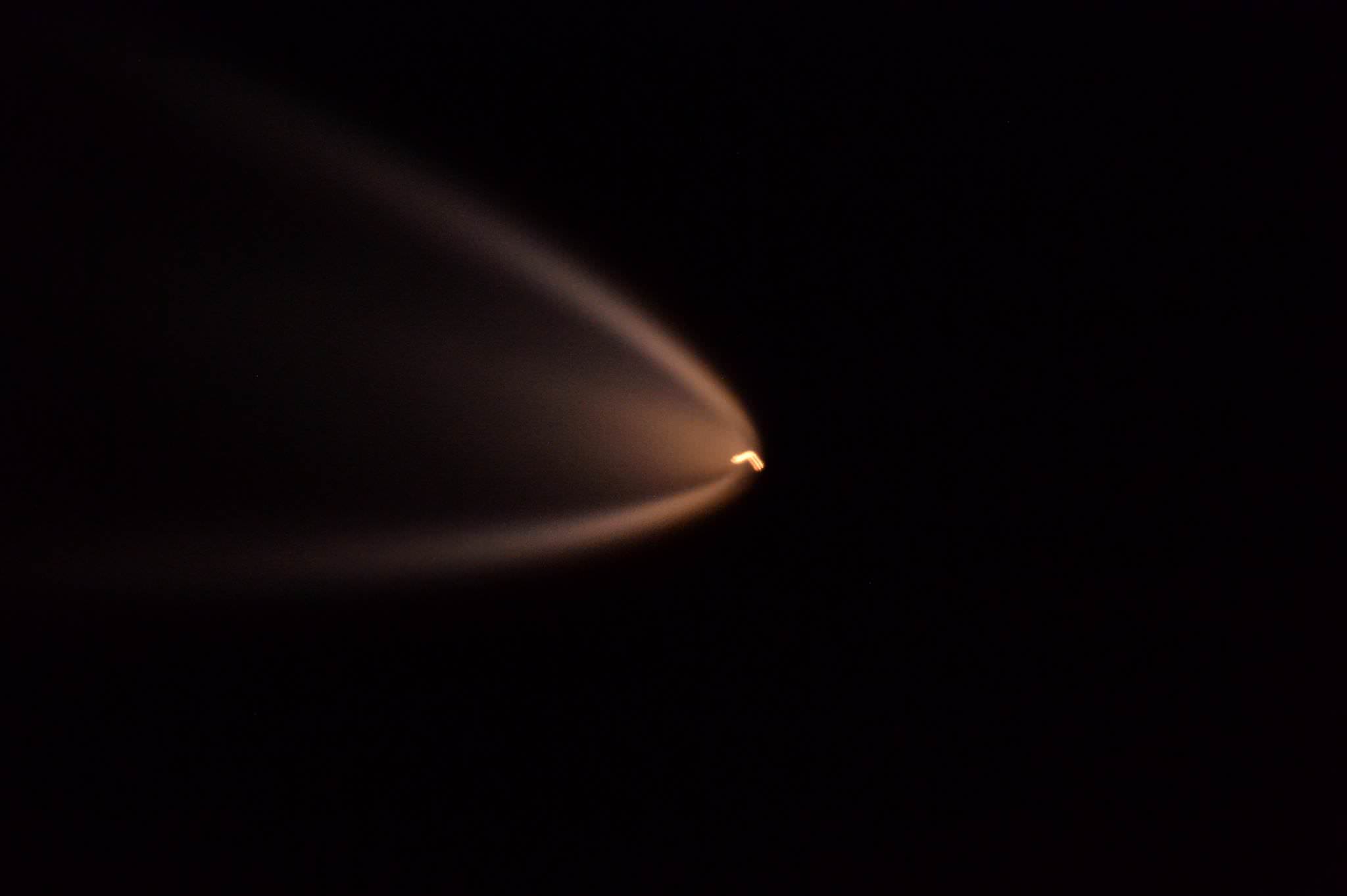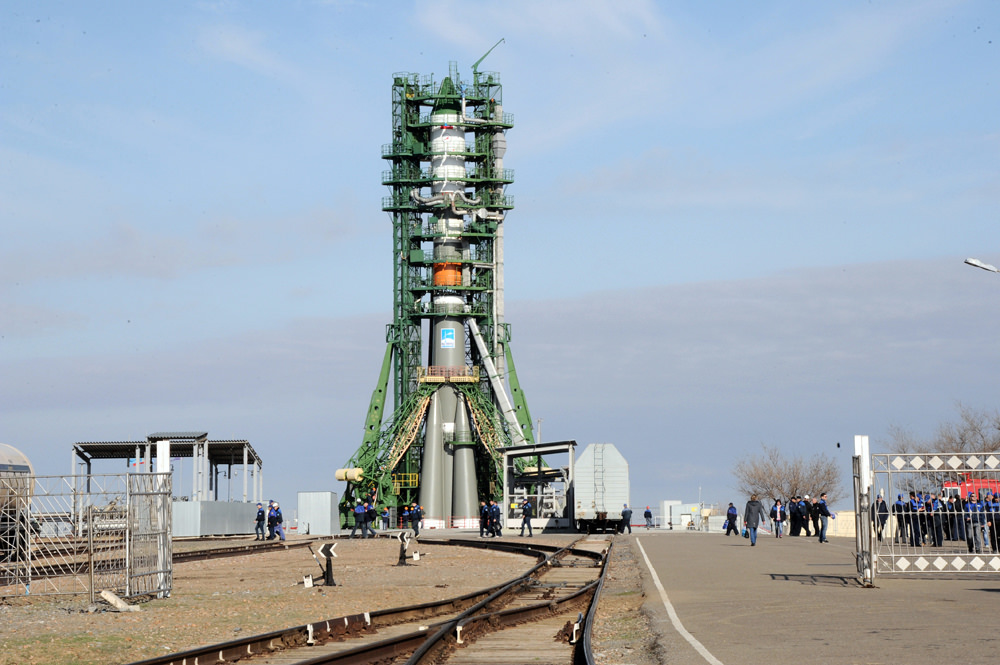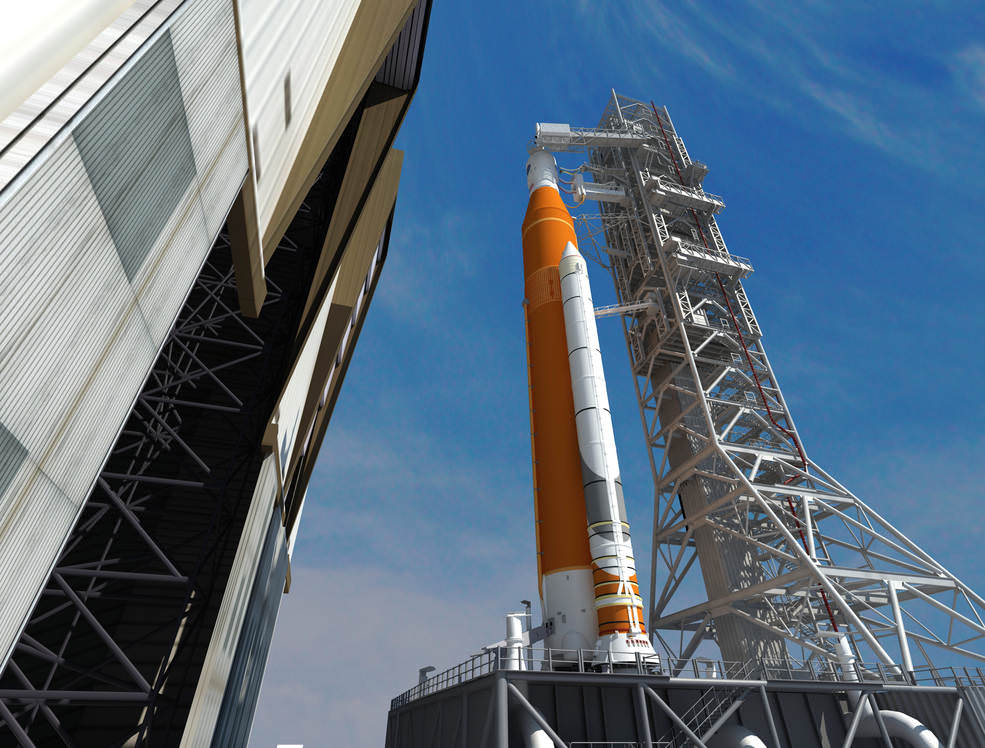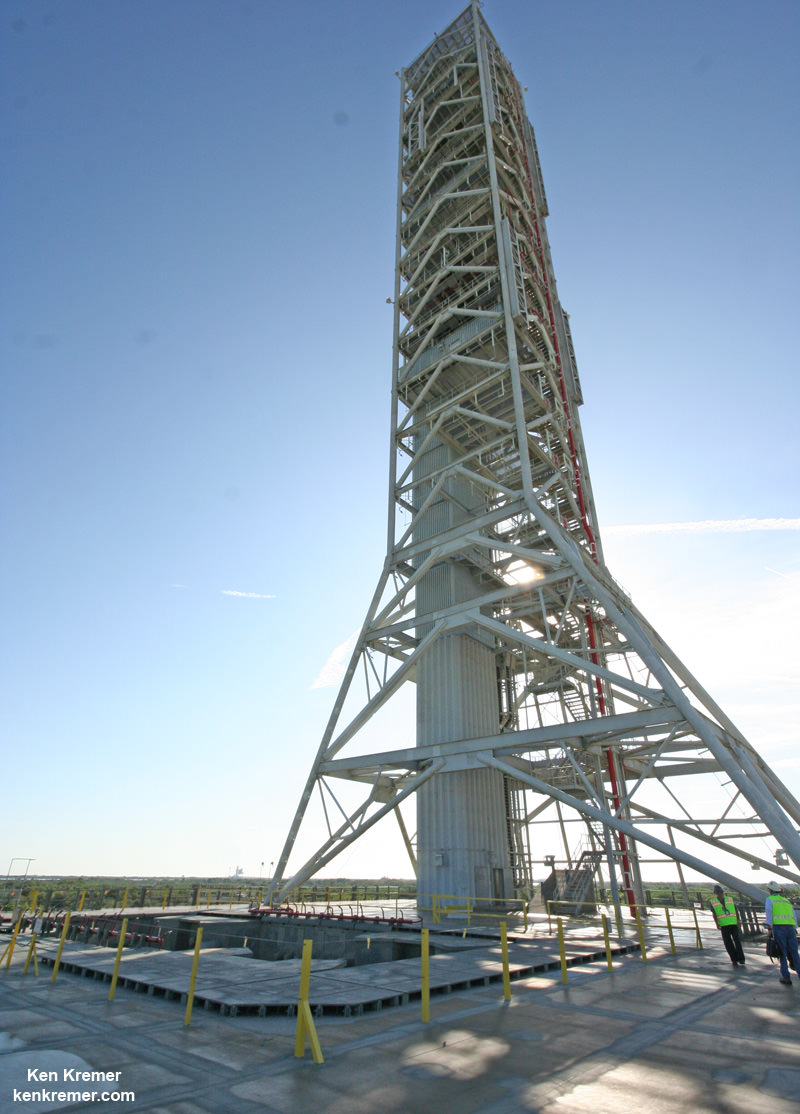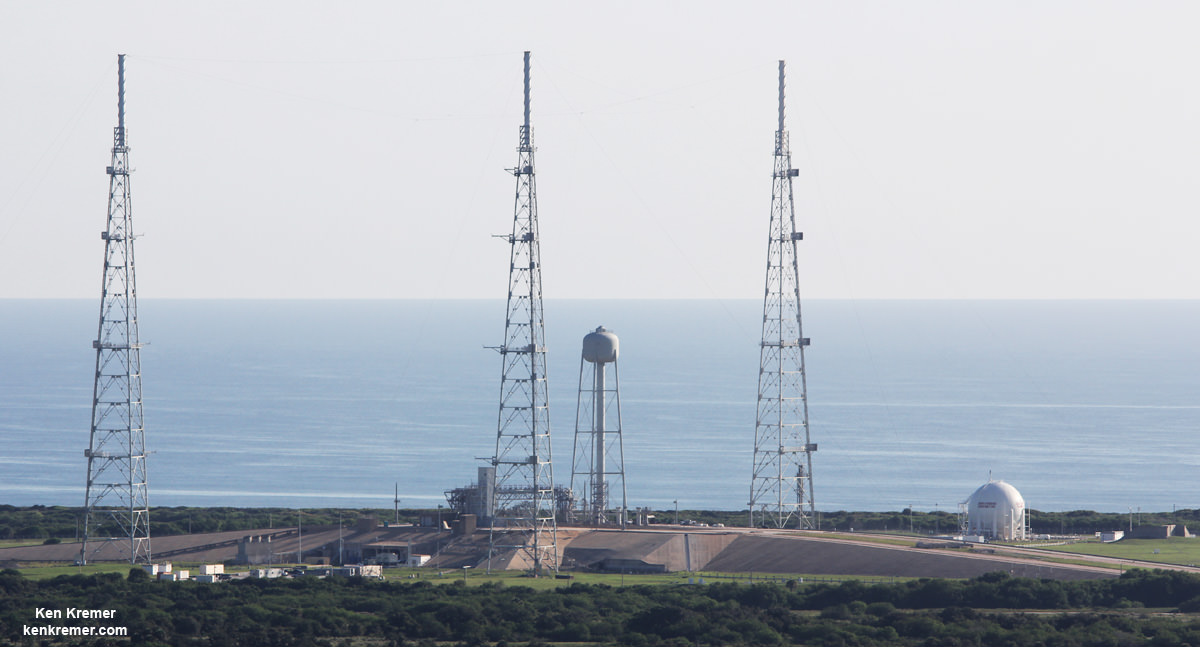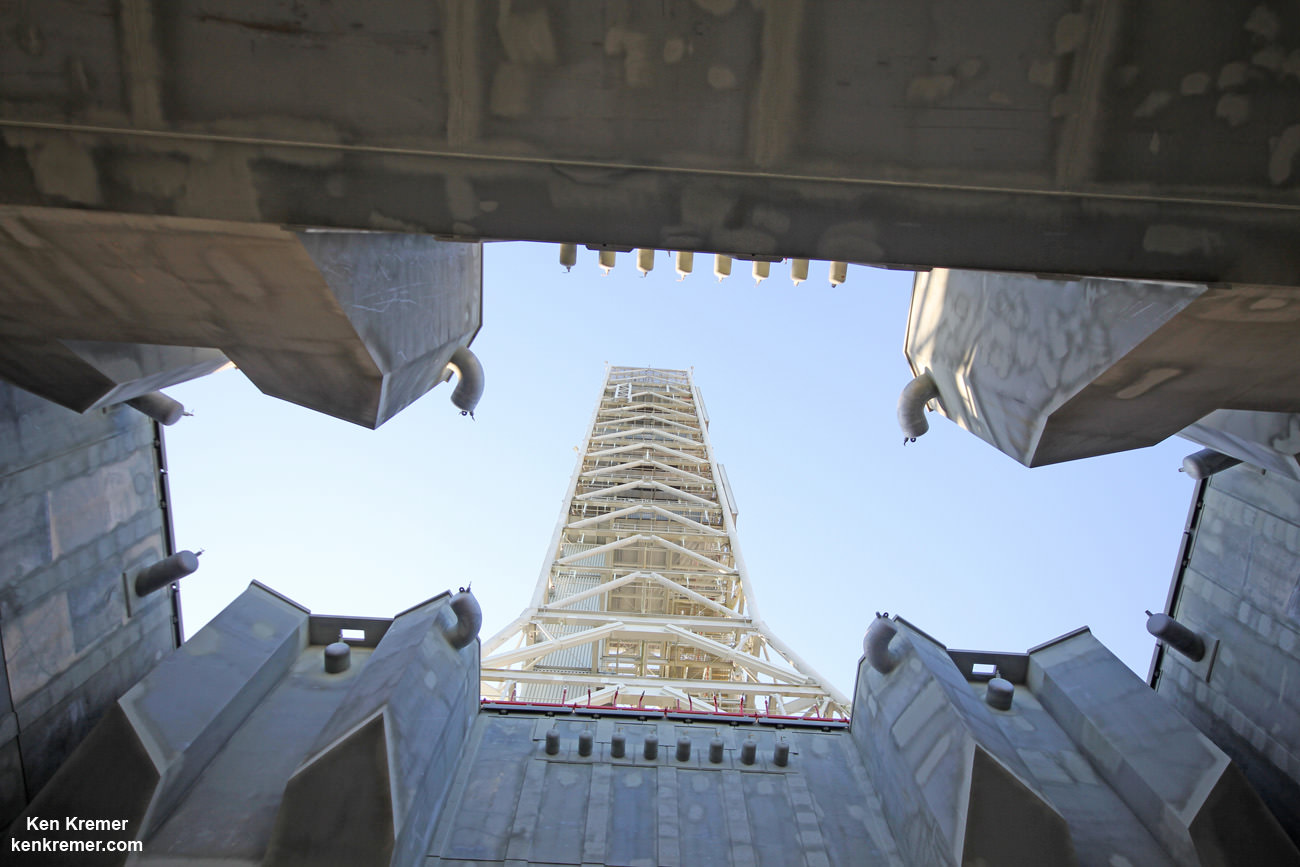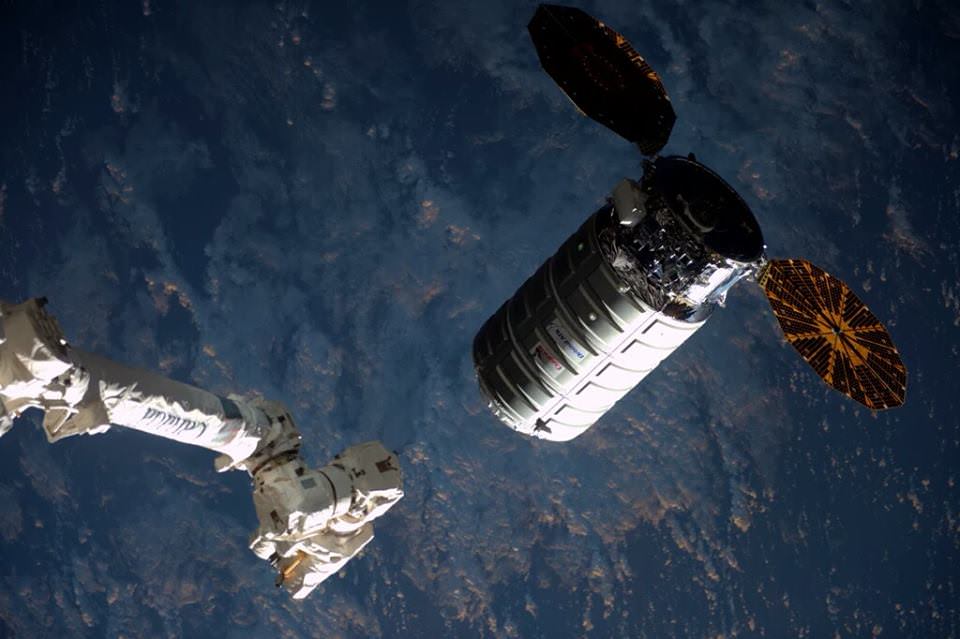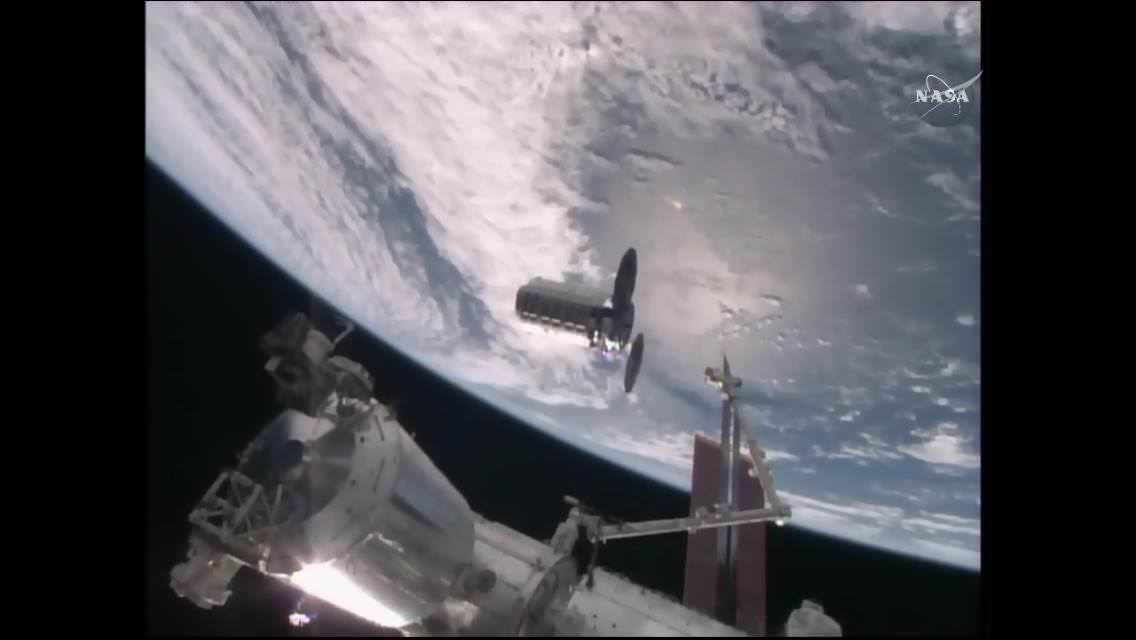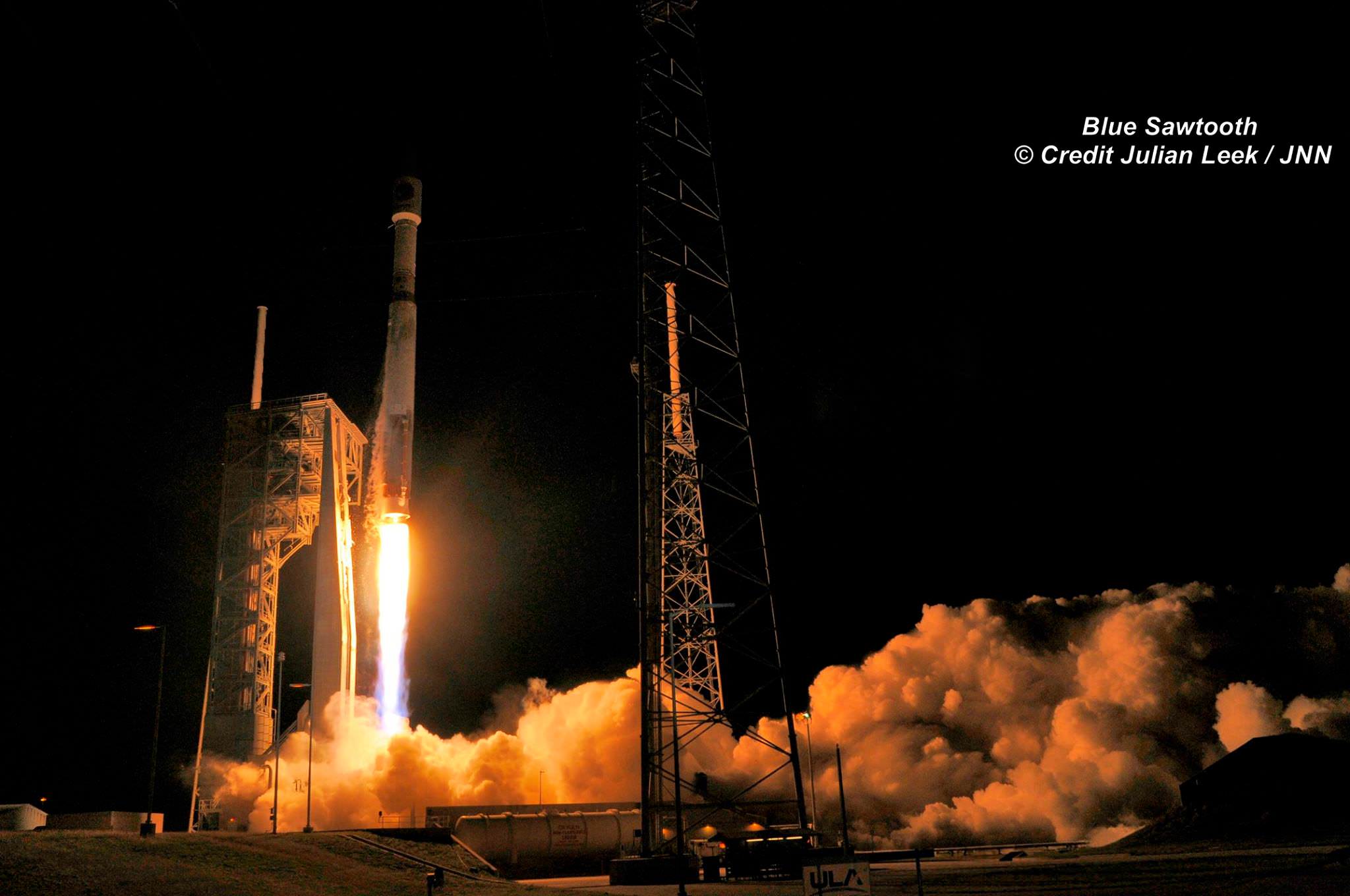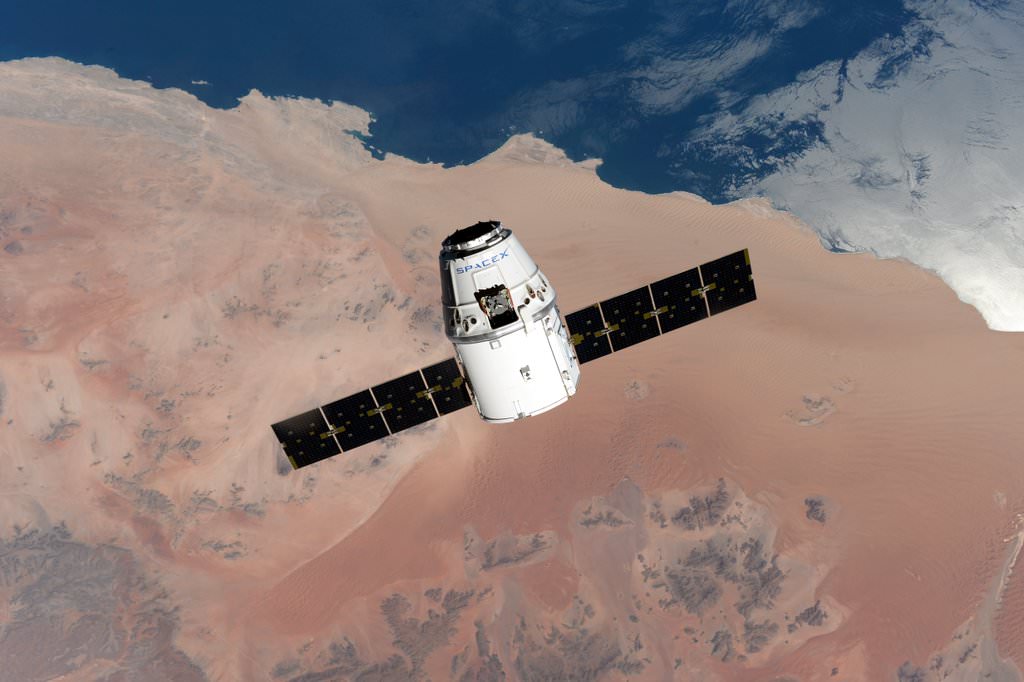
A SpaceX commercial cargo freighter jam packed with more than three and a half tons of research experiments, essential crew supplies and a new experimental inflatable habitat reached the International Space Station (ISS) and the gleeful multinational crew of six astronauts and cosmonauts on Sunday, April 10.
The U.S. SpaceX Dragon cargo craft arrived at the ISS following a carefully choreographed orbital chase inaugurated by a spectacular launch atop an upgraded SpaceX Falcon 9 rocket from Cape Canaveral Air Force Station, Florida, on Friday, April 8.
As the massive Earth orbiting outpost was soaring some 250 miles (400 kilometers) over the Pacific Ocean west of Hawaii, British astronaut Tim Peake of ESA (European Space Agency), with the able assistance of NASA’s Jeff Williams, successfully captured the SpaceX Dragon CRS-8 resupply ship with the station’s Canadian-built robotic arm.
Peake painstakingly maneuvered and deftly grappled Dragon with the snares at the terminus of the 57 foot long (19 meter long) Canadarm2 at 7:23 a.m. EDT for installation on the million pound orbital lab complex.
“Looks like we’ve caught a Dragon,” Peake radioed back to Mission Control. The orbital operational was webcast live on NASA TV.
“Awesome capture by crewmate Tim Peake,” said fellow NASA crewmate Tim Kopra who snapped a series of breathtaking images of the approach and capture.
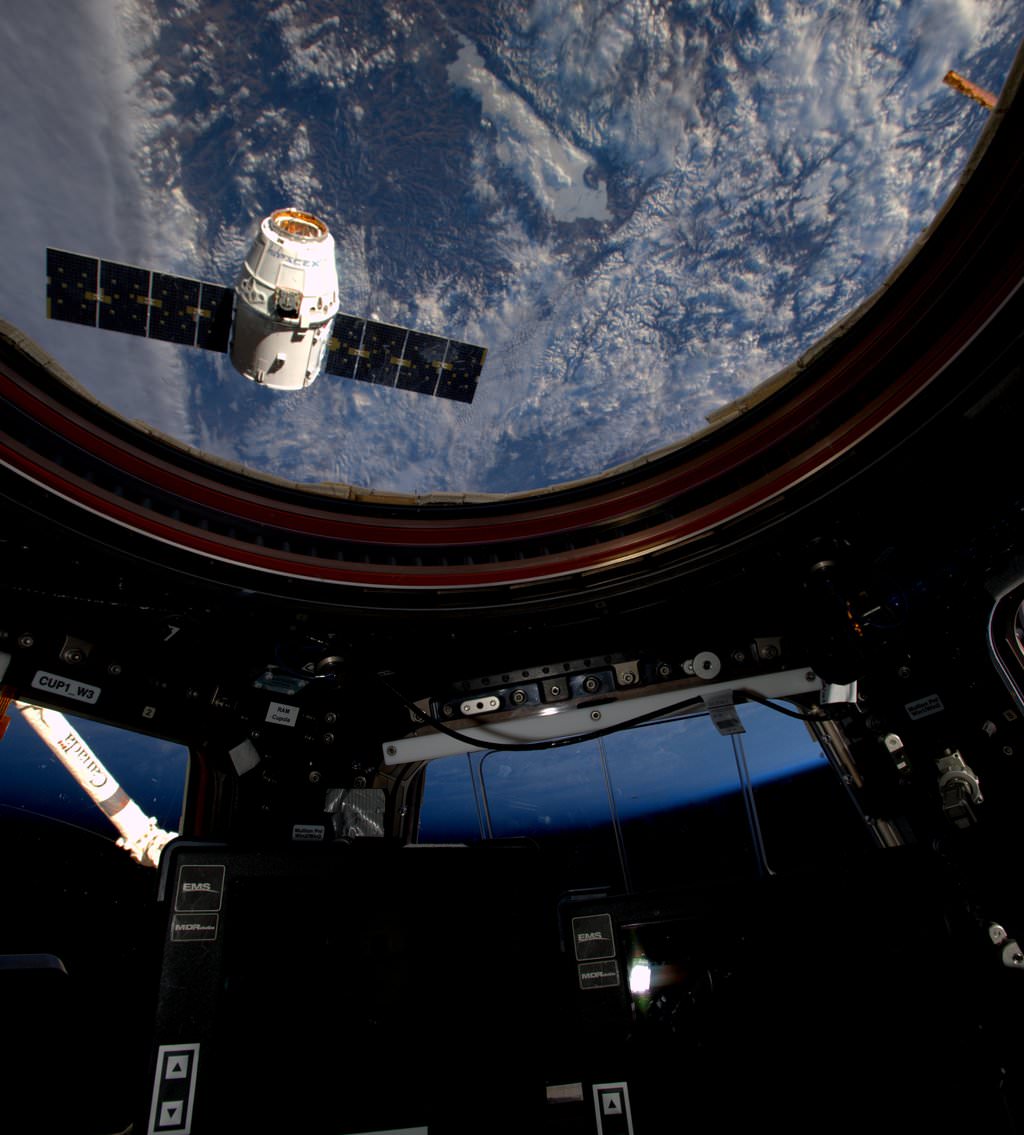
Ground controllers at Mission Control in Houston then issued commands to carefully guide the robotic arm holding the Dragon freighter to the Earth-facing port on the bottom side of the Harmony module for its month long stay at the space station.
The ship was finally bolted into place at 9:57 a.m. EDT as the station flew 250 miles (400 km) over southern Algeria.
Watch this NASA video compiling all the highlights of the arrival and mating of the SpaceX Dragon on April 10, 2016 carrying the BEAM habitat module and 3.5 tons of science and supplies. Credit: NASA
Expedition 47 crew members Jeff Williams and Tim Kopra of NASA, Tim Peake of ESA (European Space Agency) and cosmonauts Yuri Malenchenko, Alexey Ovchinin and Oleg Skripochka of Roscosmos are currently living aboard the orbiting laboratory.
In a historic first, the arrival of the SpaceX Dragon cargo spacecraft marks the first time that two American cargo ships are simultaneously docked to the ISS. The Orbital ATK Cygnus CRS-6 cargo freighter only just arrived on March 26 and is now installed at a neighboring docking port on the Unity module.
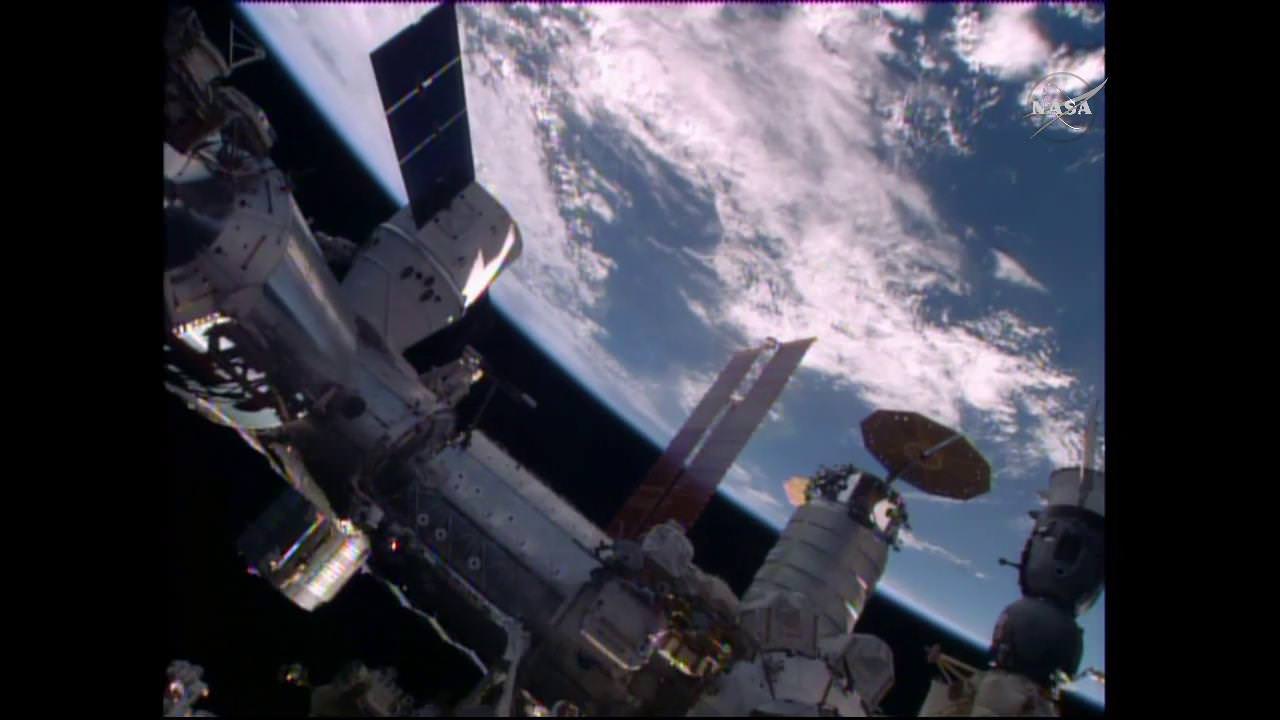
Cygnus was launched to the ISS atop a ULA Atlas V barely two weeks earlier on March 22 – as I reported on and witnessed from the Kennedy Space Center press site.
“With the arrival of Dragon, the space station ties the record for most vehicles on station at one time – six,” say NASA officials.
The Dragon spacecraft is delivering almost 7,000 pounds of cargo, including the Bigelow Expandable Activity Module (BEAM), to the orbital laboratory which was carried to orbit inside the Dragon’s unpressurized truck section.
BEAM is a prototype inflatable habitat that the crew will soon pluck from the Dragon’s truck with the robotic arm for installation on a side port of the Harmony module.
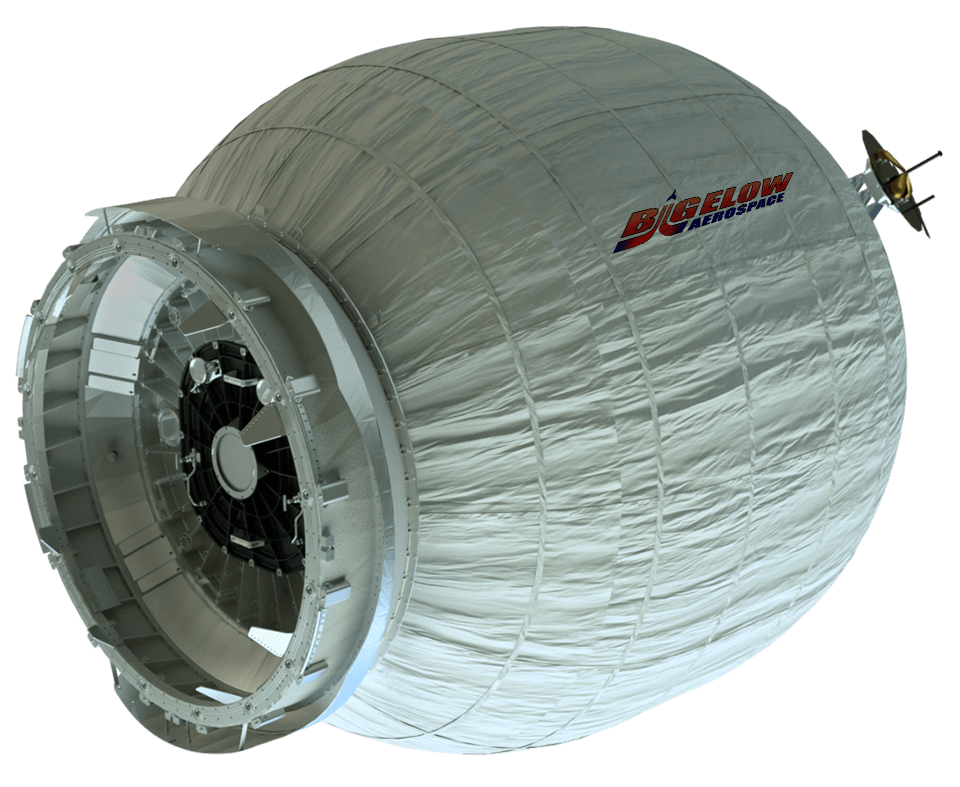
CRS-8 counts as the company’s eighth flight to deliver supplies, science experiments and technology demonstrations to the ISS for the crews of Expeditions 47 and 48 to support dozens of the approximately 250 science and research investigations in progress.
Friday’s launch marks the first for a Dragon since the catastrophic failure of the SpaceX Falcon 9 last June.
Dragon will remain at the station until it returns for Earth on May 11 for a parachute assisted splash down in the Pacific Ocean off the west coast of Baja California. It will be packed with almost 3,500 pounds off cargo and numerous science samples, including those biological samples collected by 1 year ISS crew member Scott Kelly, for return to investigators, hardware and spacewalking tools, some additional broken hardware for repair and some items of trash for disposal.
Video caption: 5 camera views of the SpaceX Falcon 9 launch of the CRS-8 mission to the ISS on 04/08/2016. Credit: Jeff Seibert/AmericaSpace
Stay tuned here for Ken’s continuing Earth and planetary science and human spaceflight news.
………….
Learn more about SpaceX, NASA Mars rovers, Orion, SLS, ISS, Orbital ATK, ULA, Boeing, Space Taxis, NASA missions and more at Ken’s upcoming outreach events:
Apr 12: Hosting Dr. Jim Green, NASA, Director Planetary Science, for a Planetary sciences talk about “Ceres, Pluto and Planet X” at Princeton University; 7:30 PM, Amateur Astronomers Assoc of Princeton, Peyton Hall, Princeton, NJ – http://www.princetonastronomy.org/
Apr 17: “NASA and the Road to Mars Human Spaceflight programs”- 1:30 PM at Washington Crossing State Park, Nature Center, Titusville, NJ – http://www.state.nj.us/dep/parksandforests/parks/washcros.html

